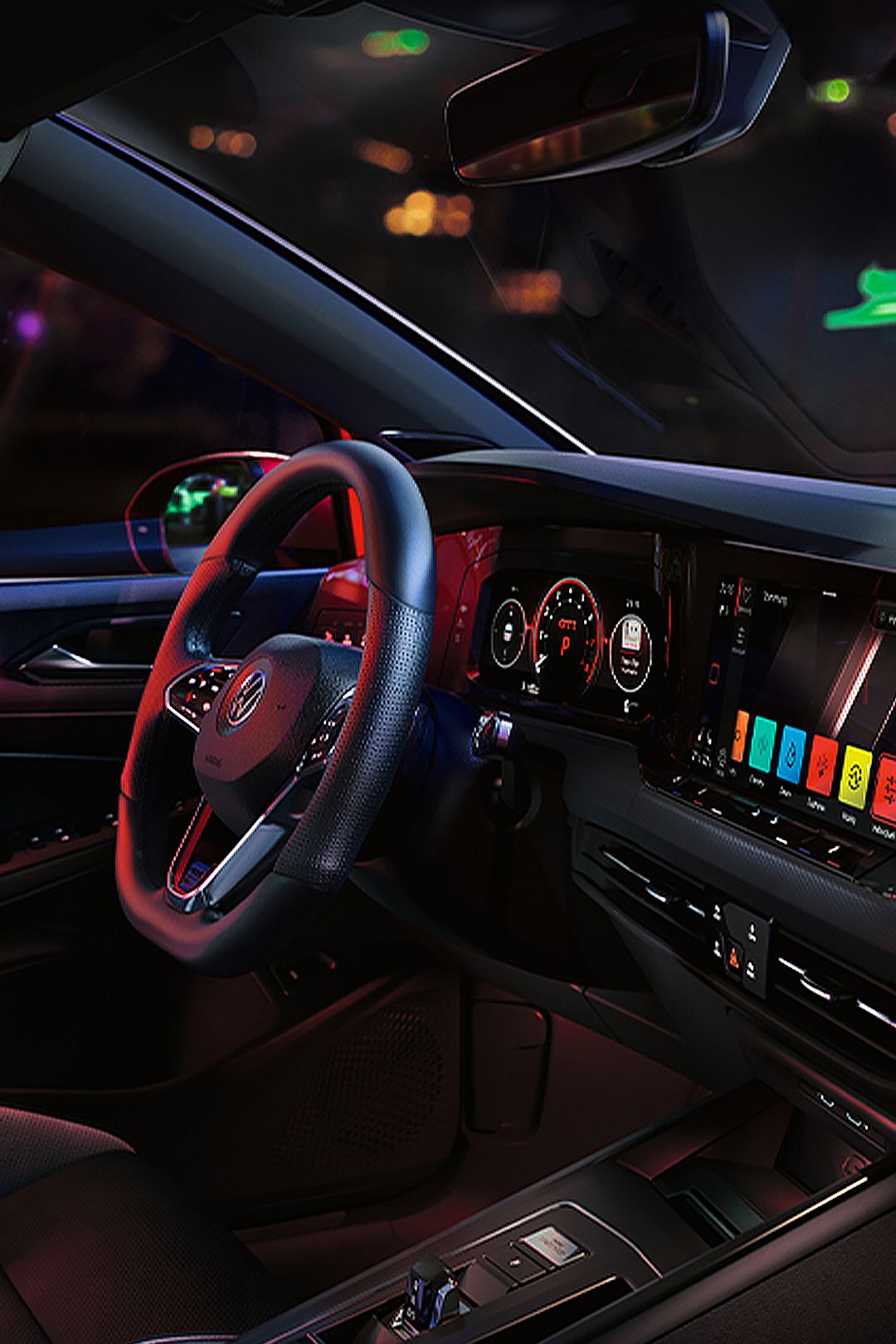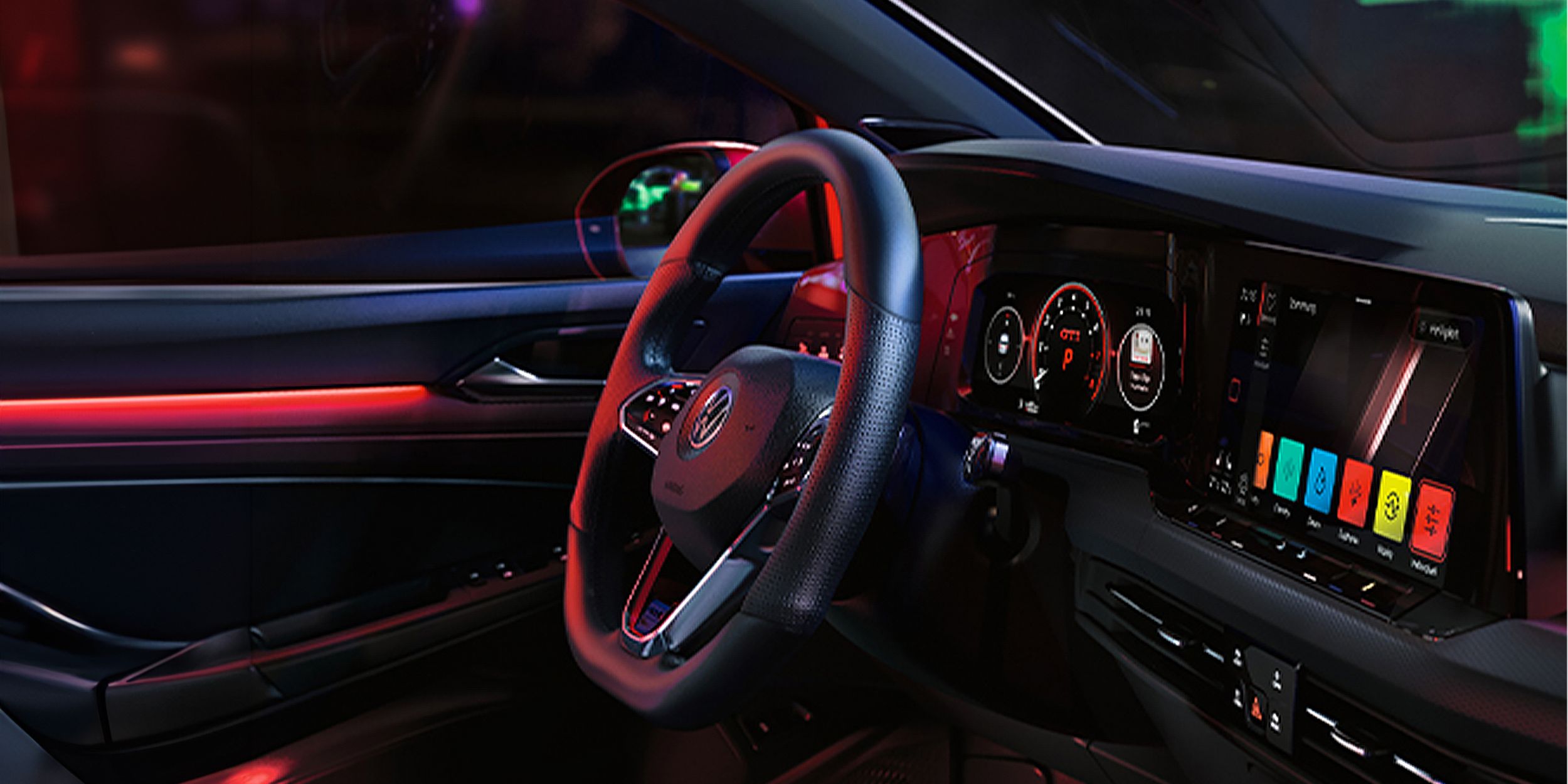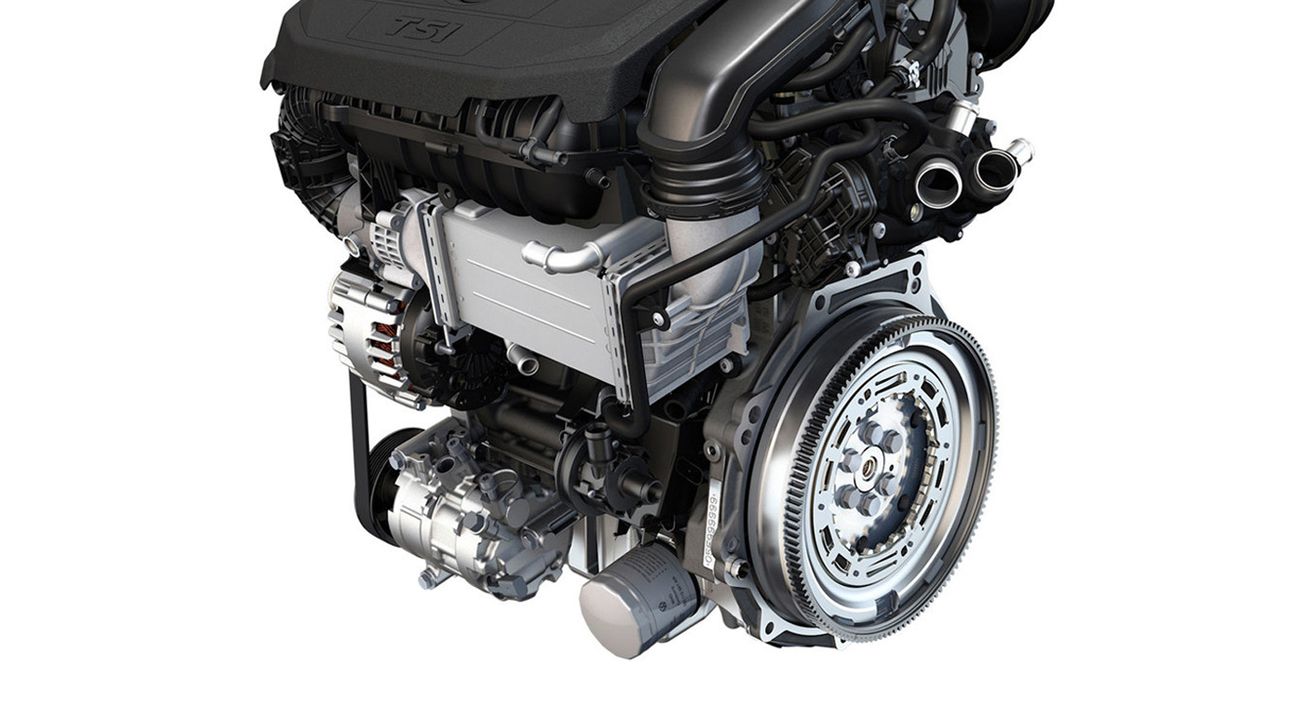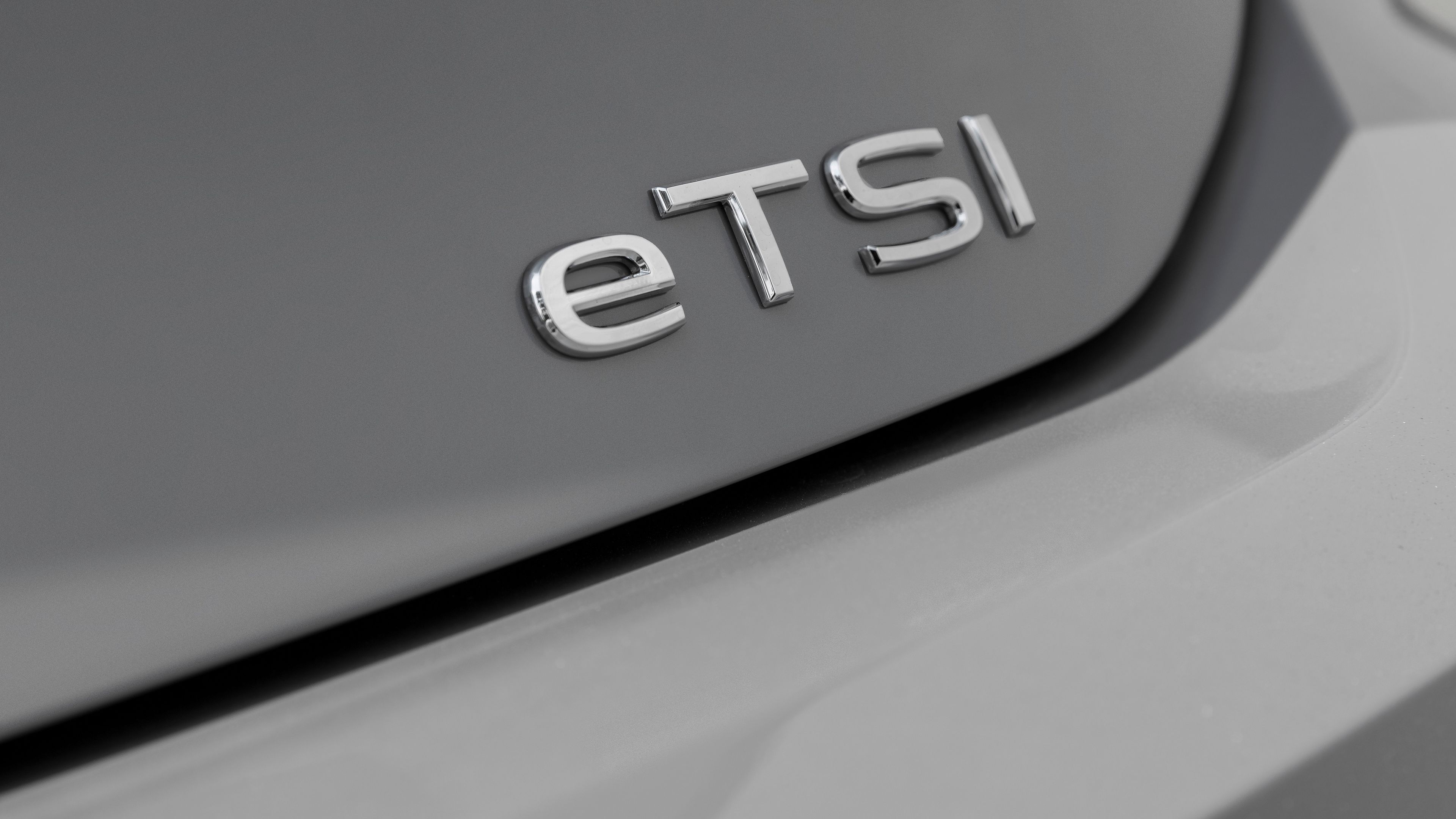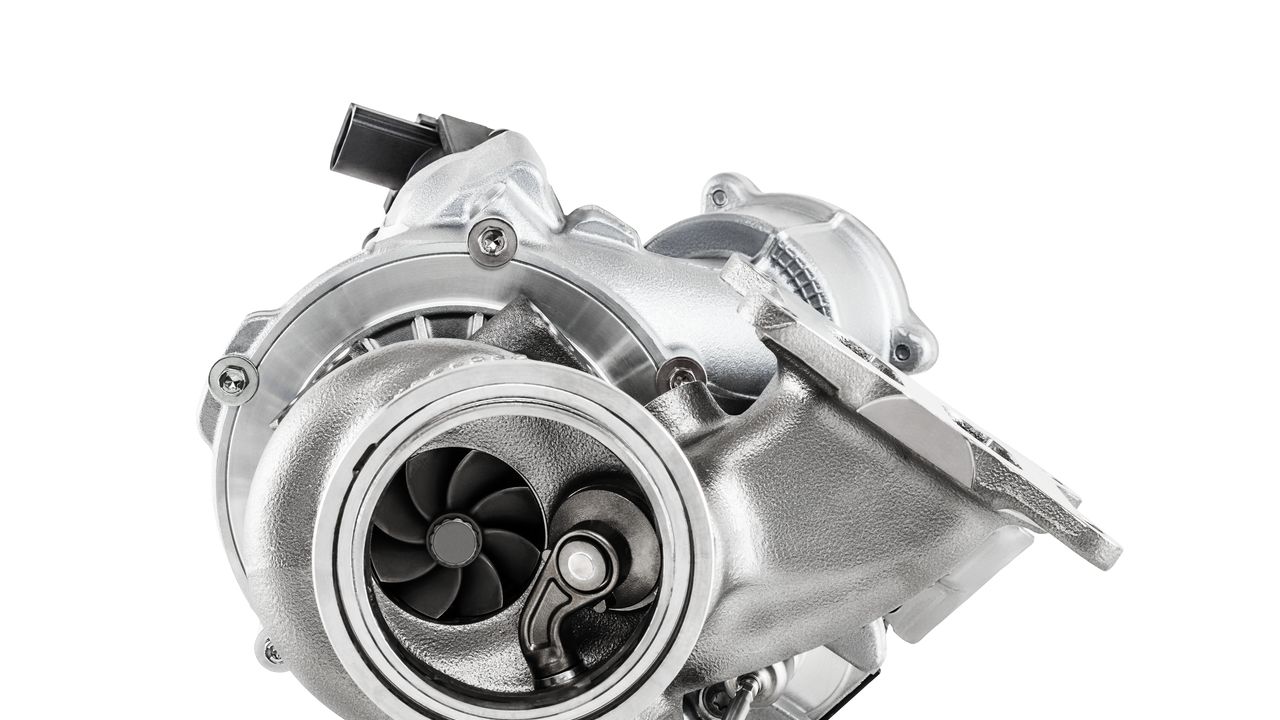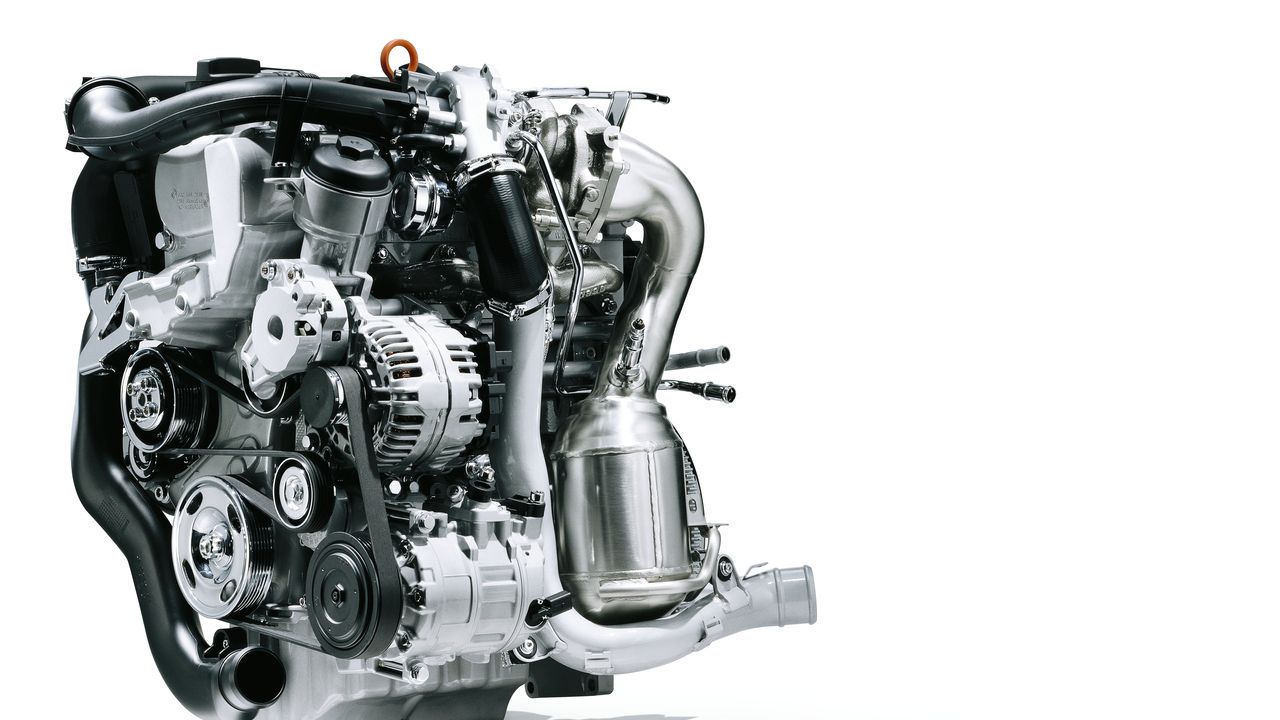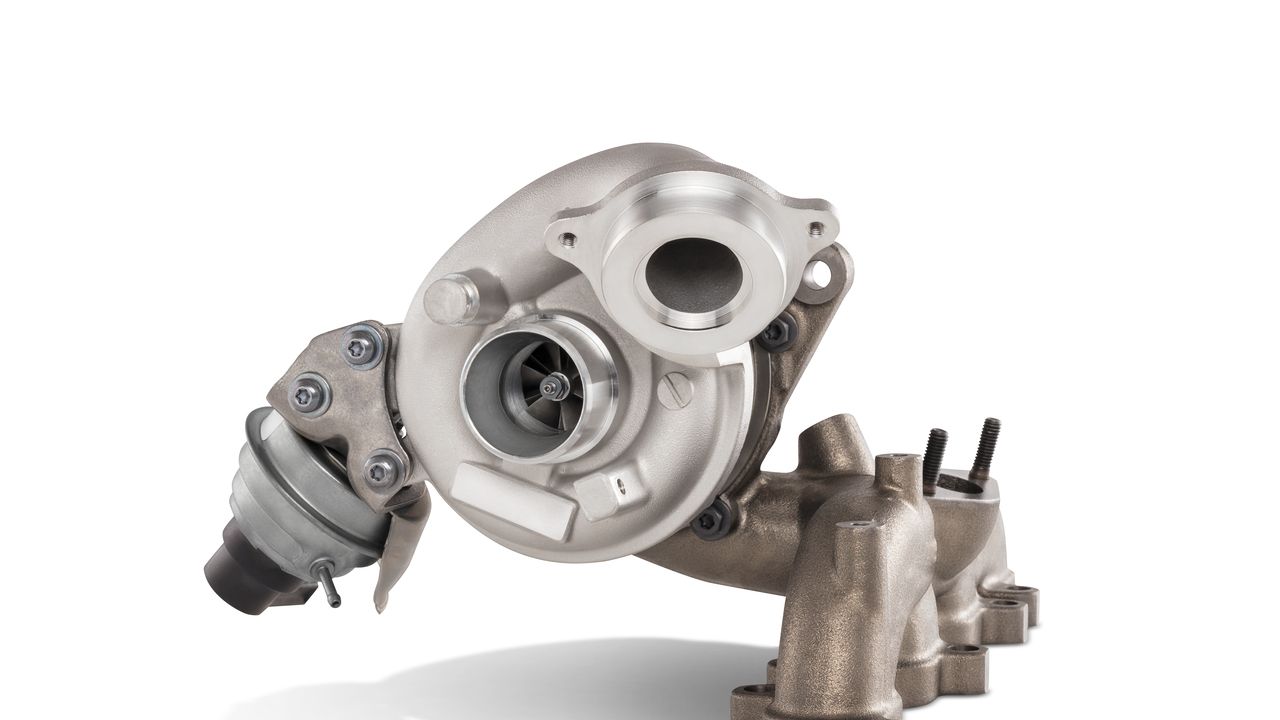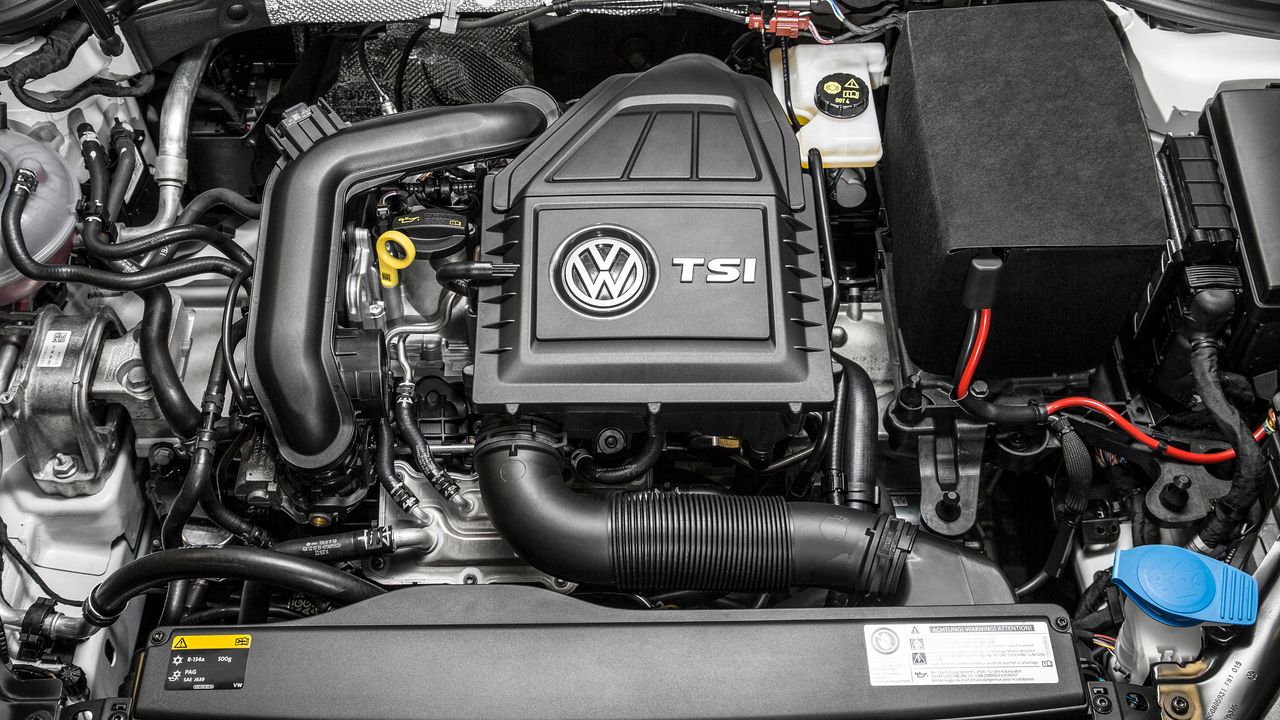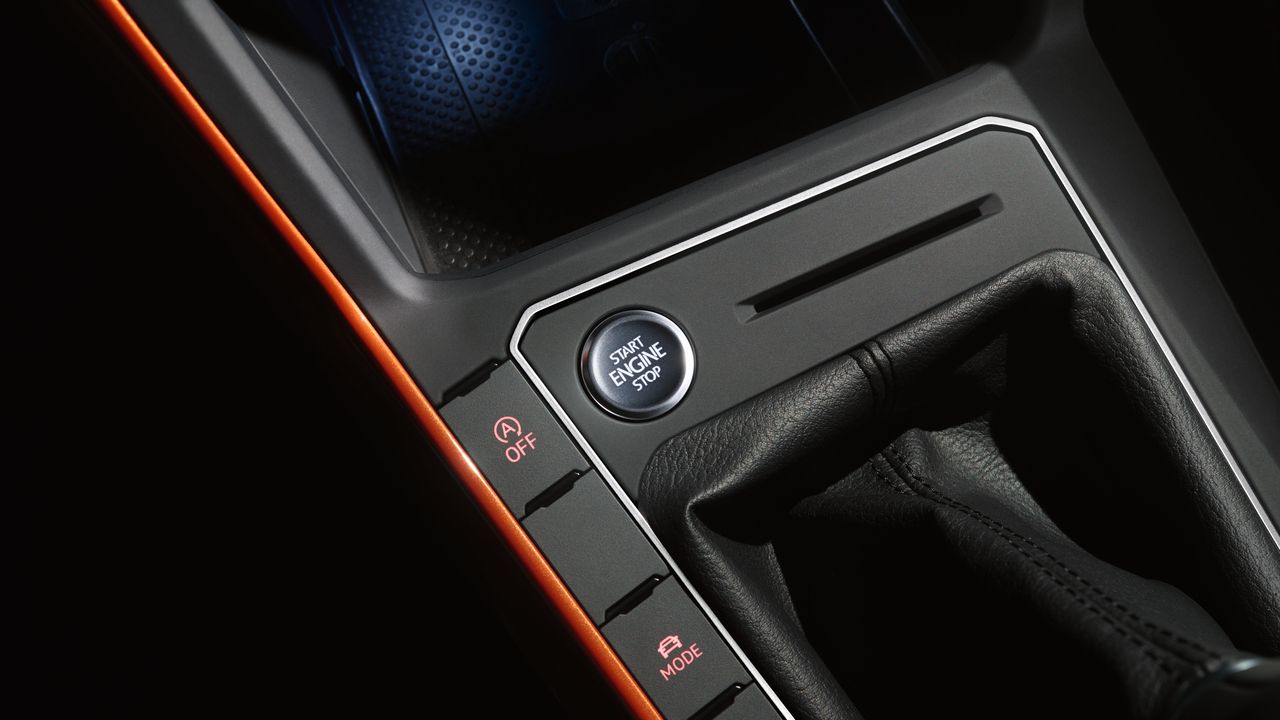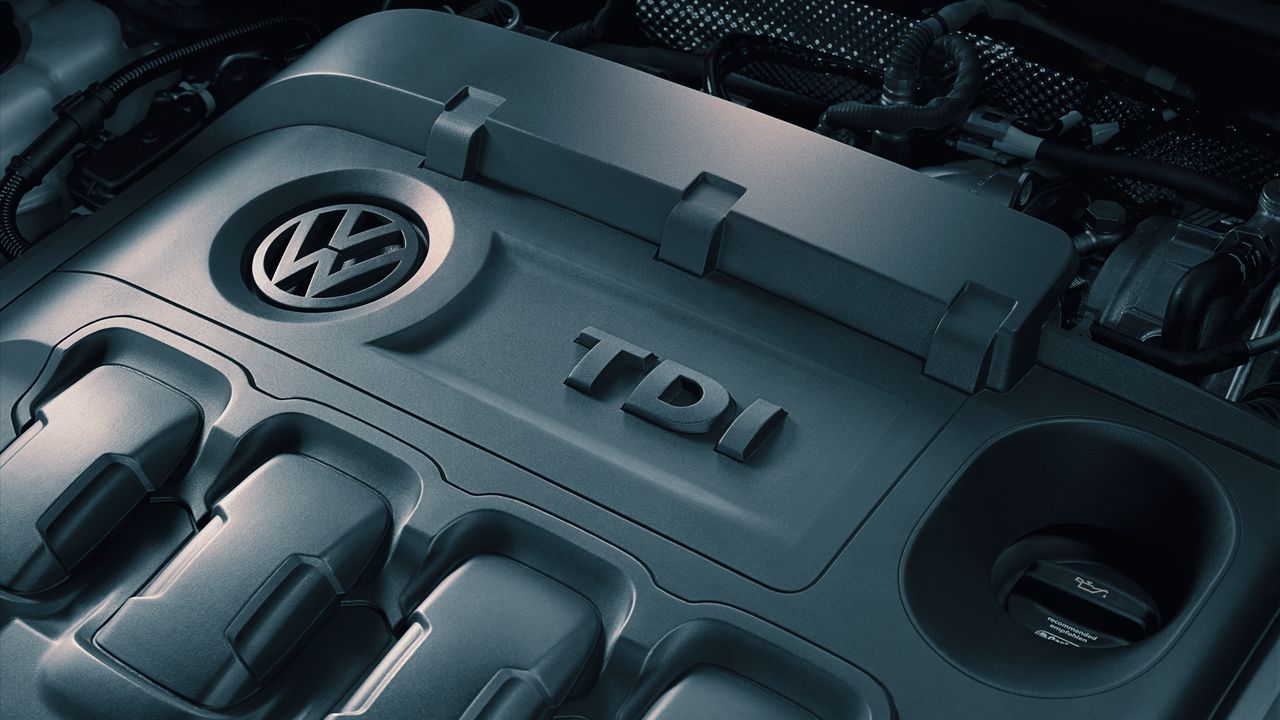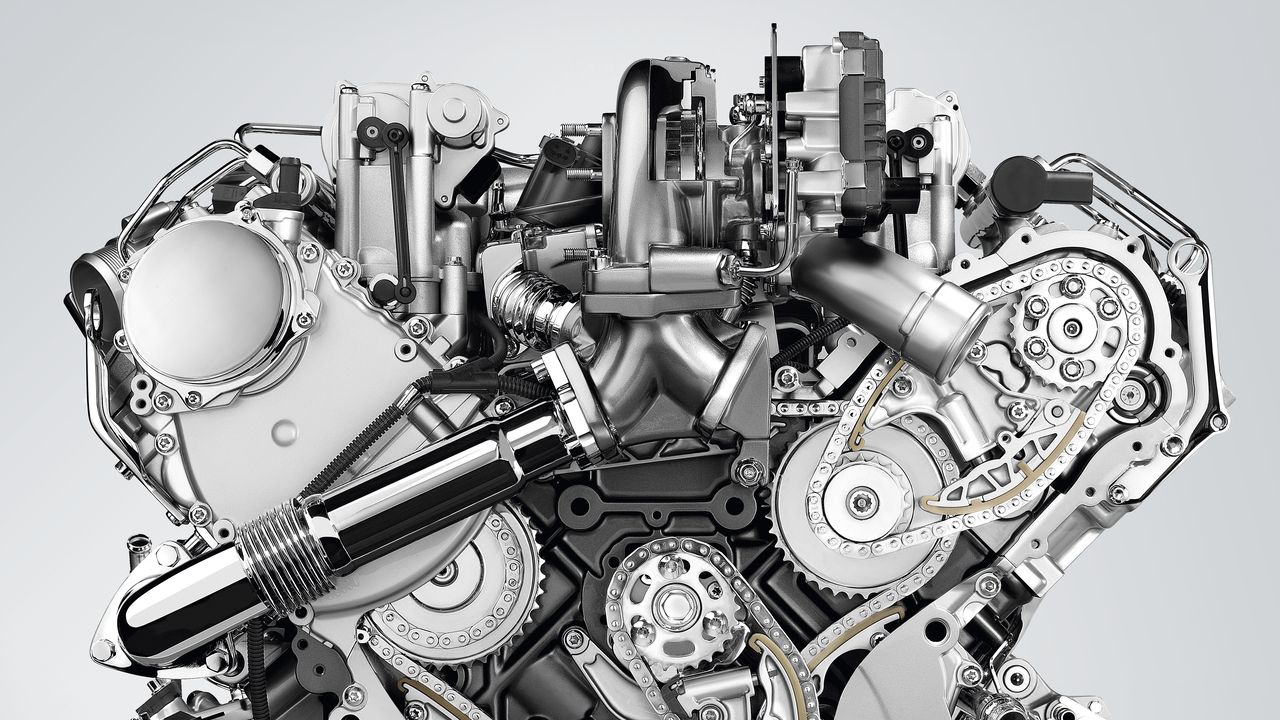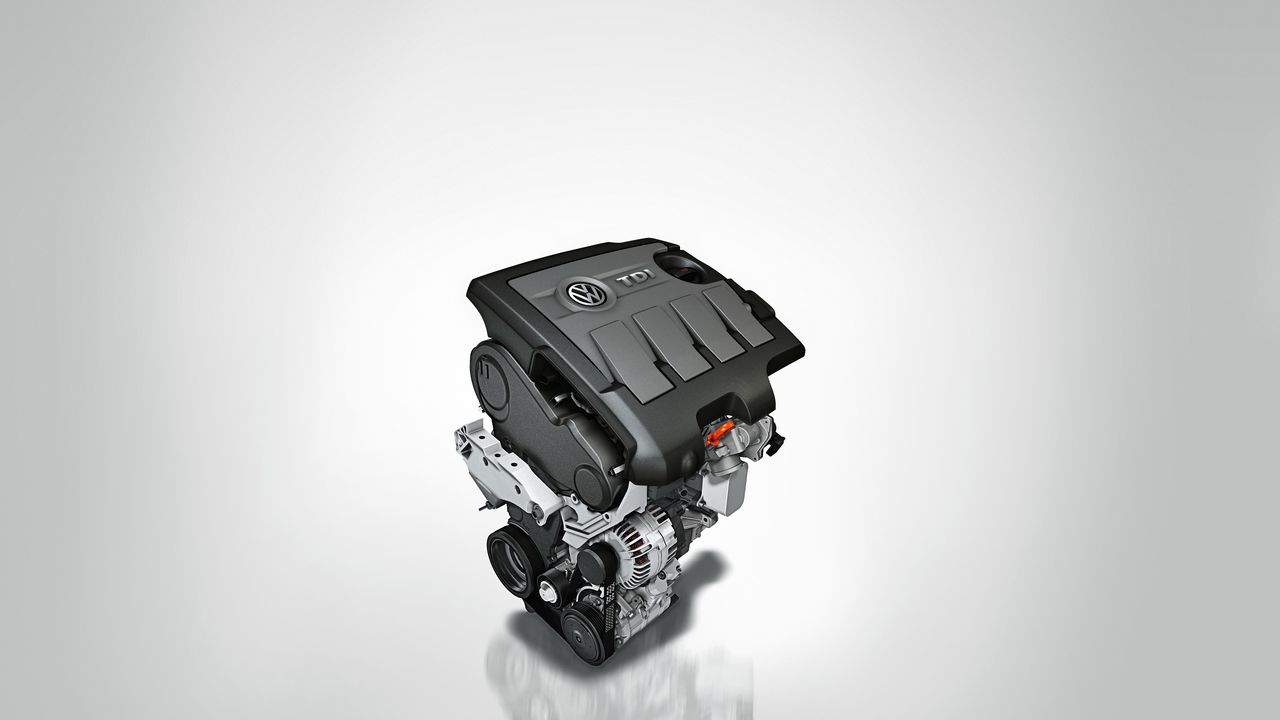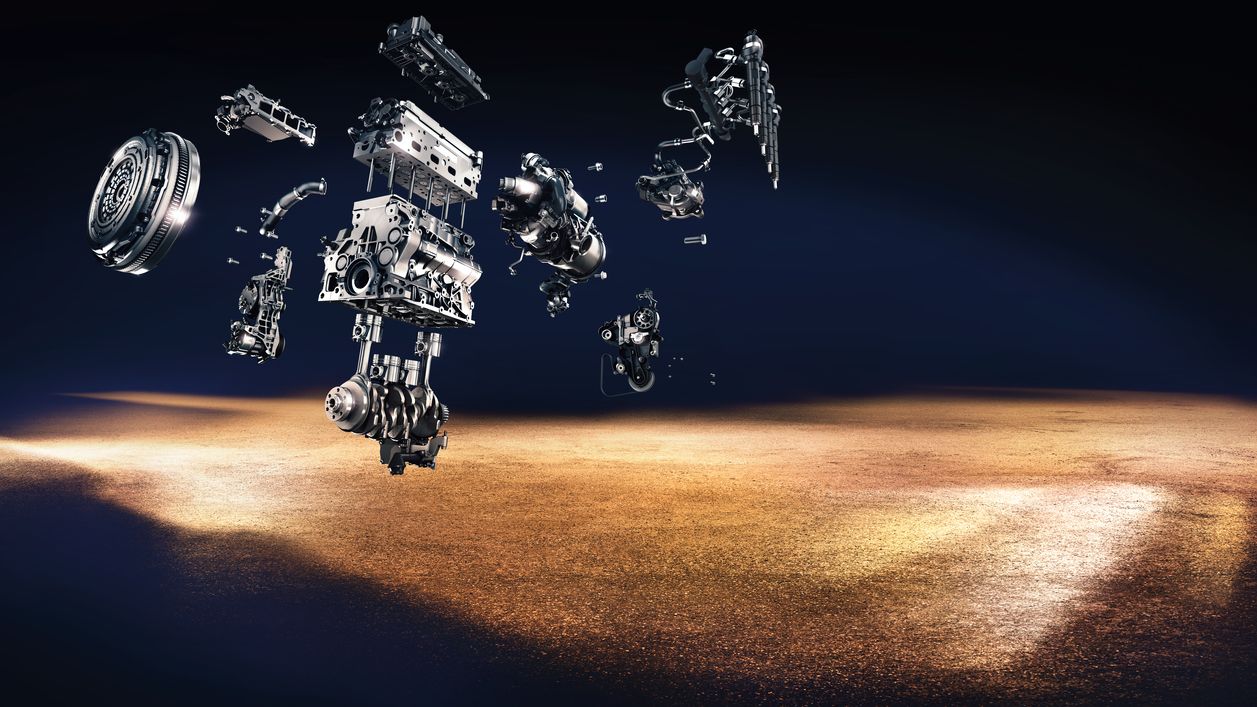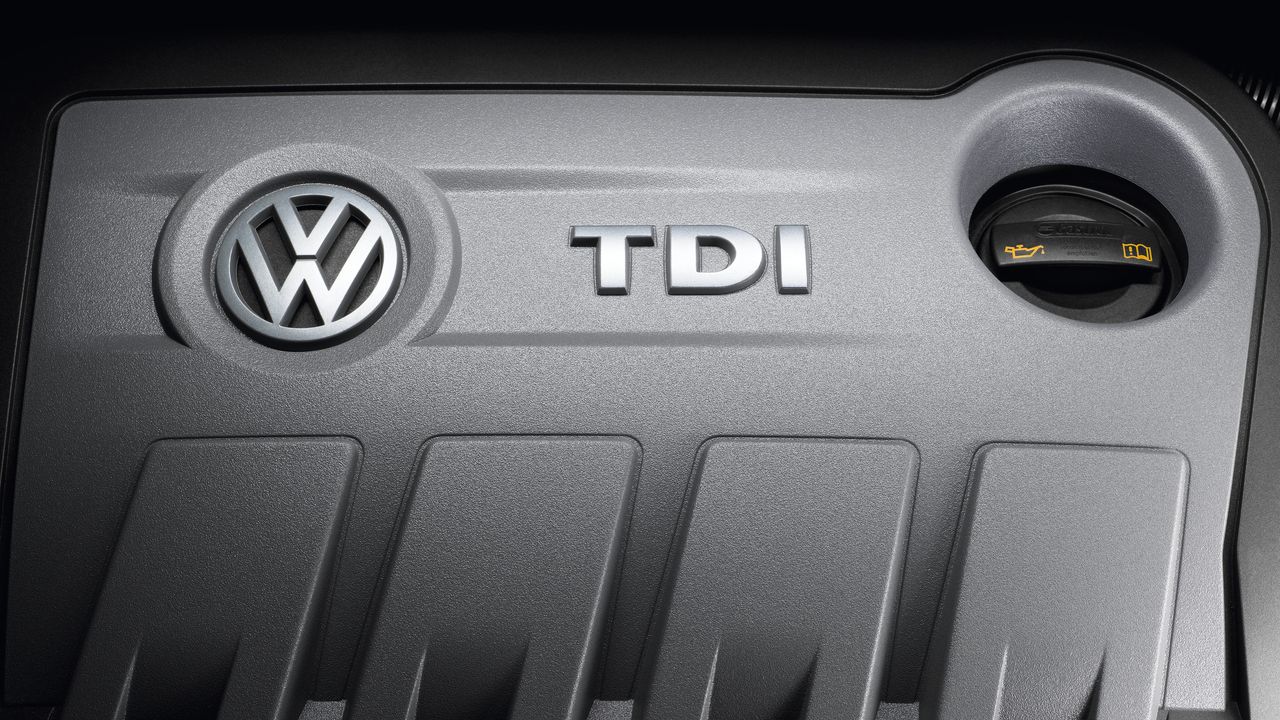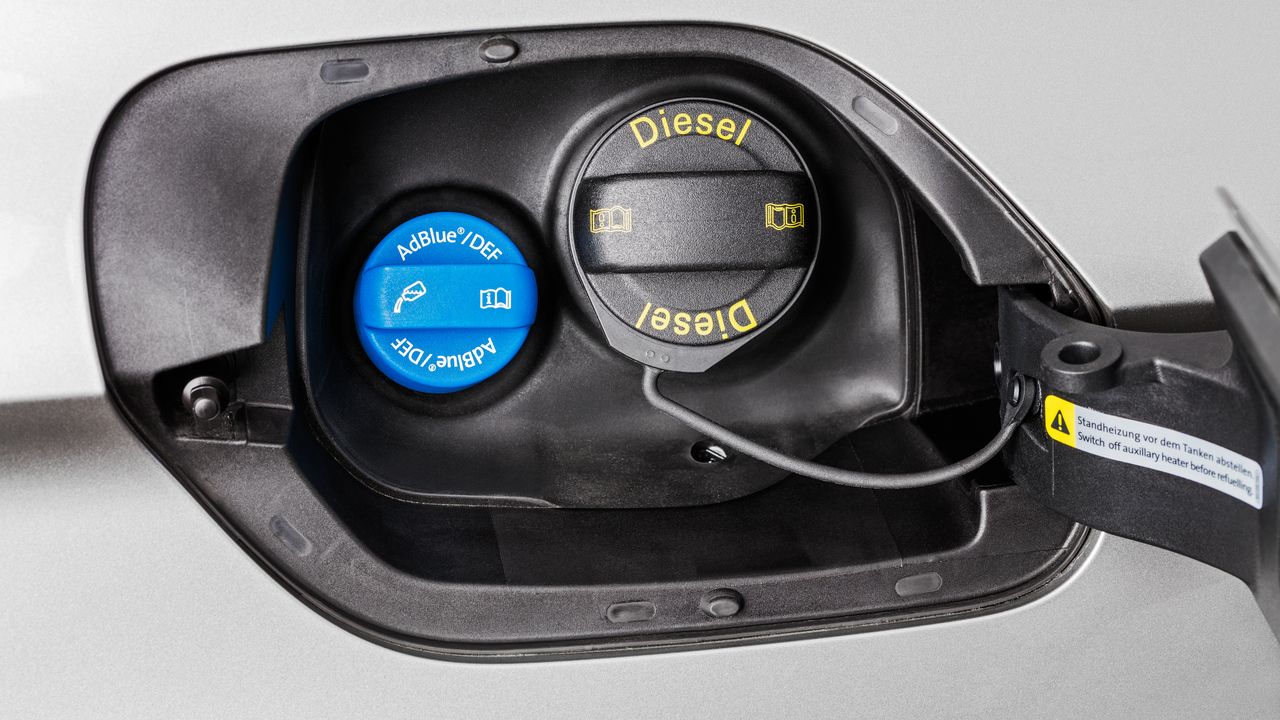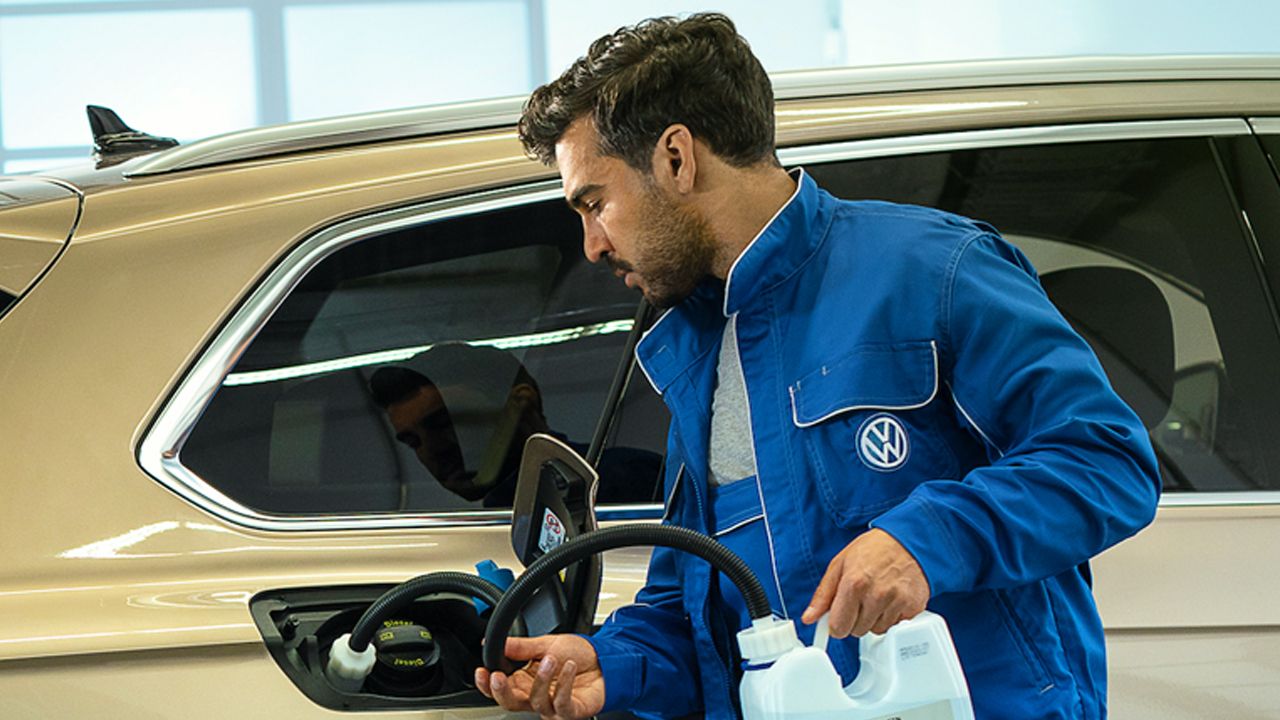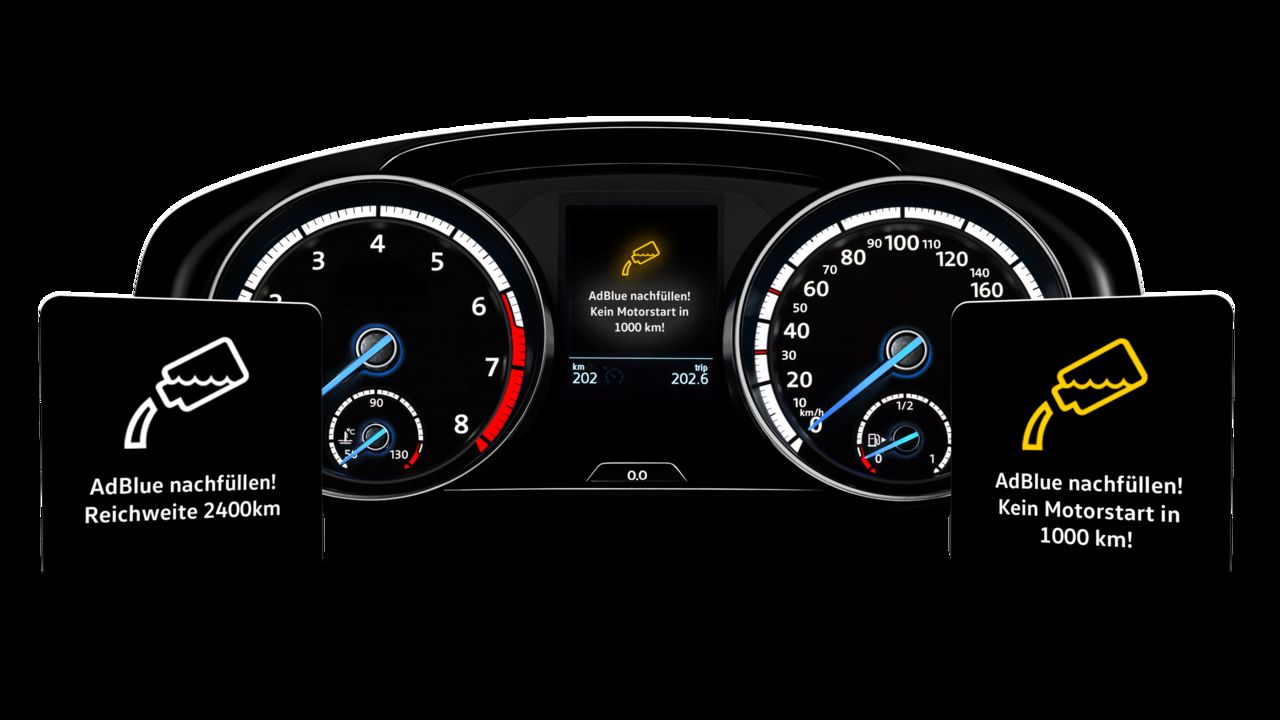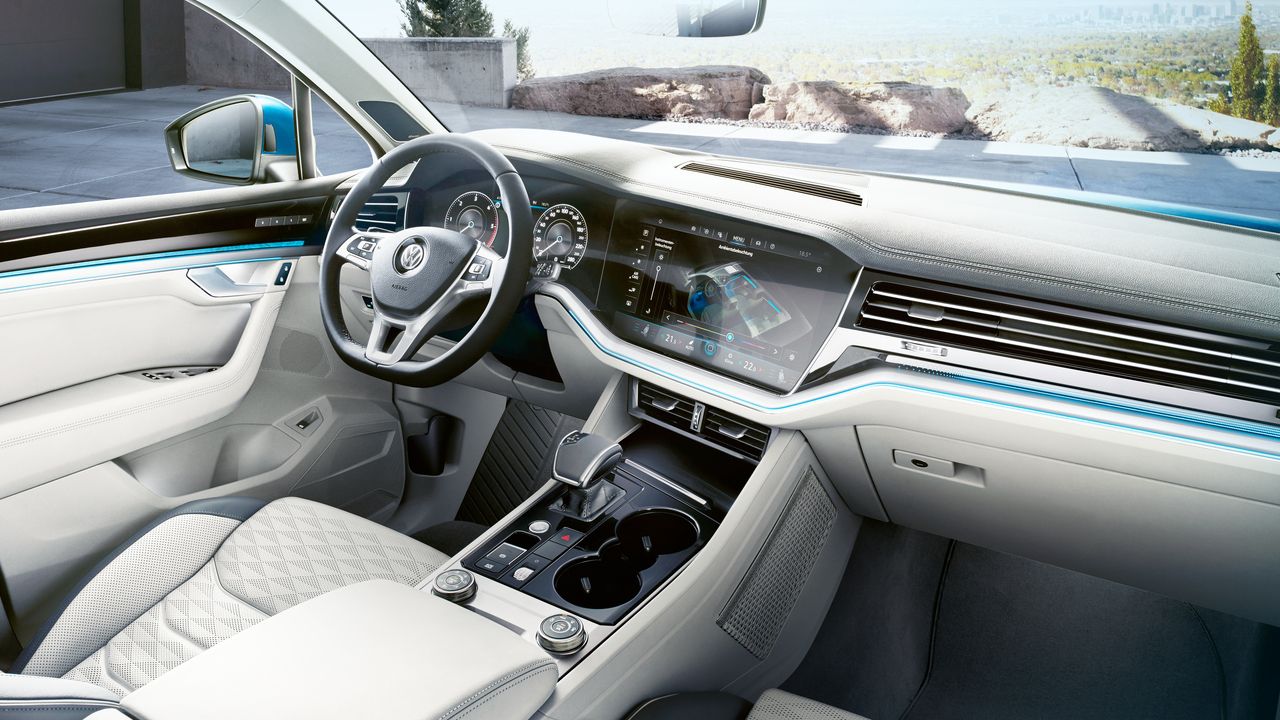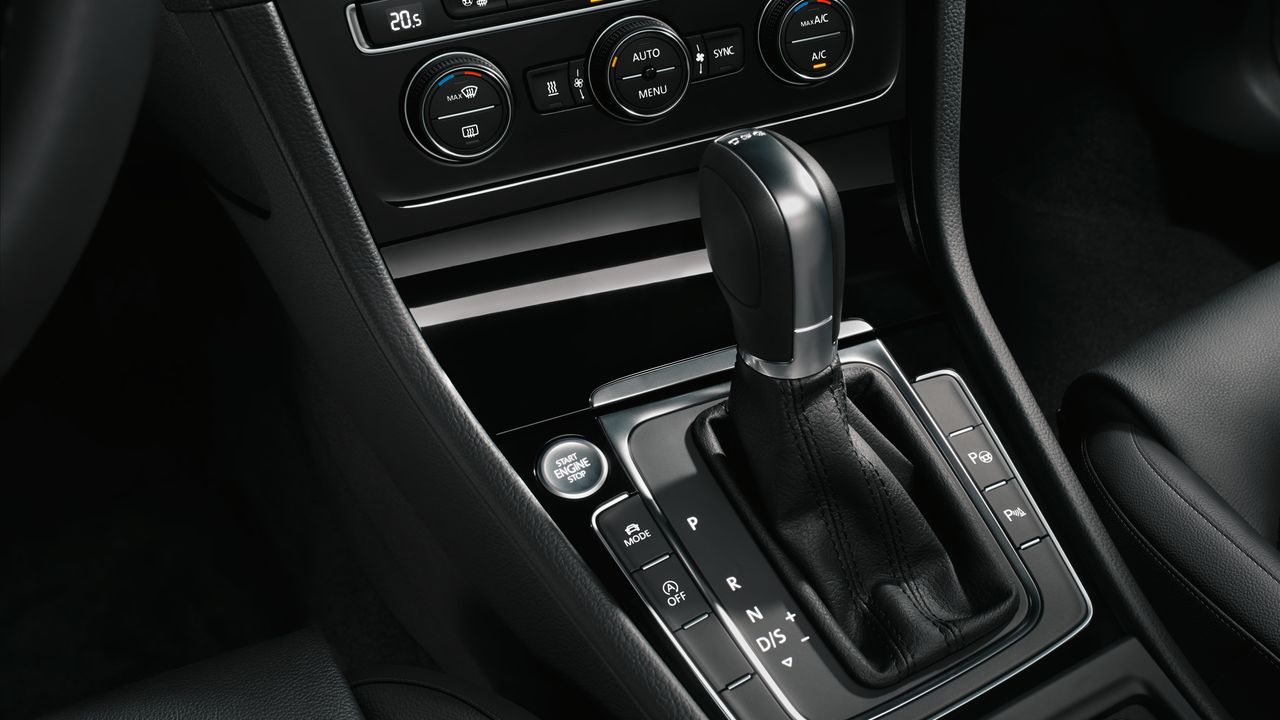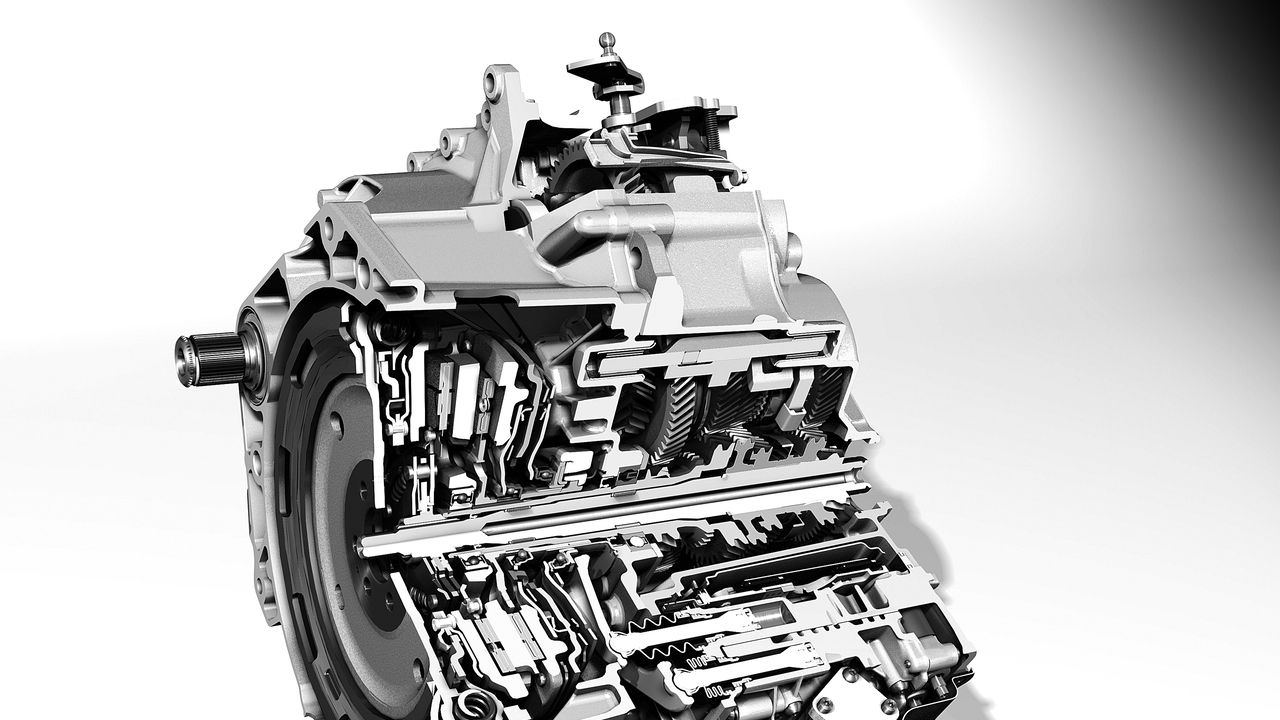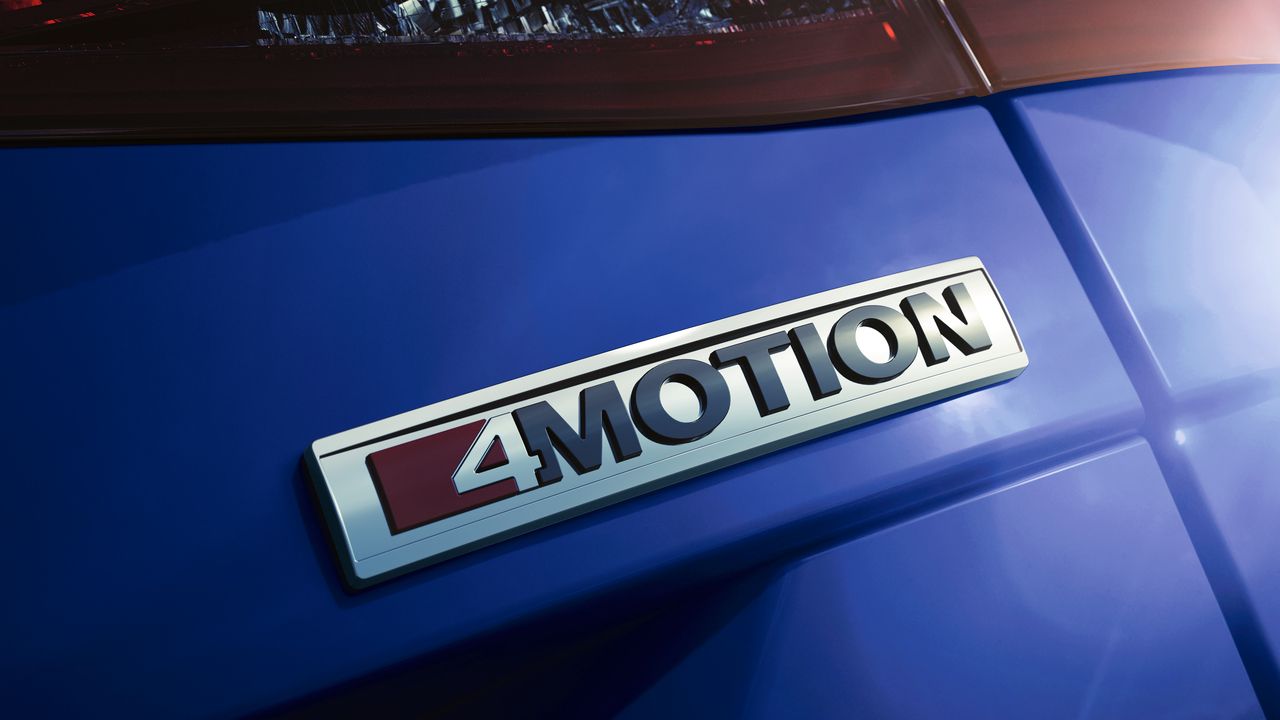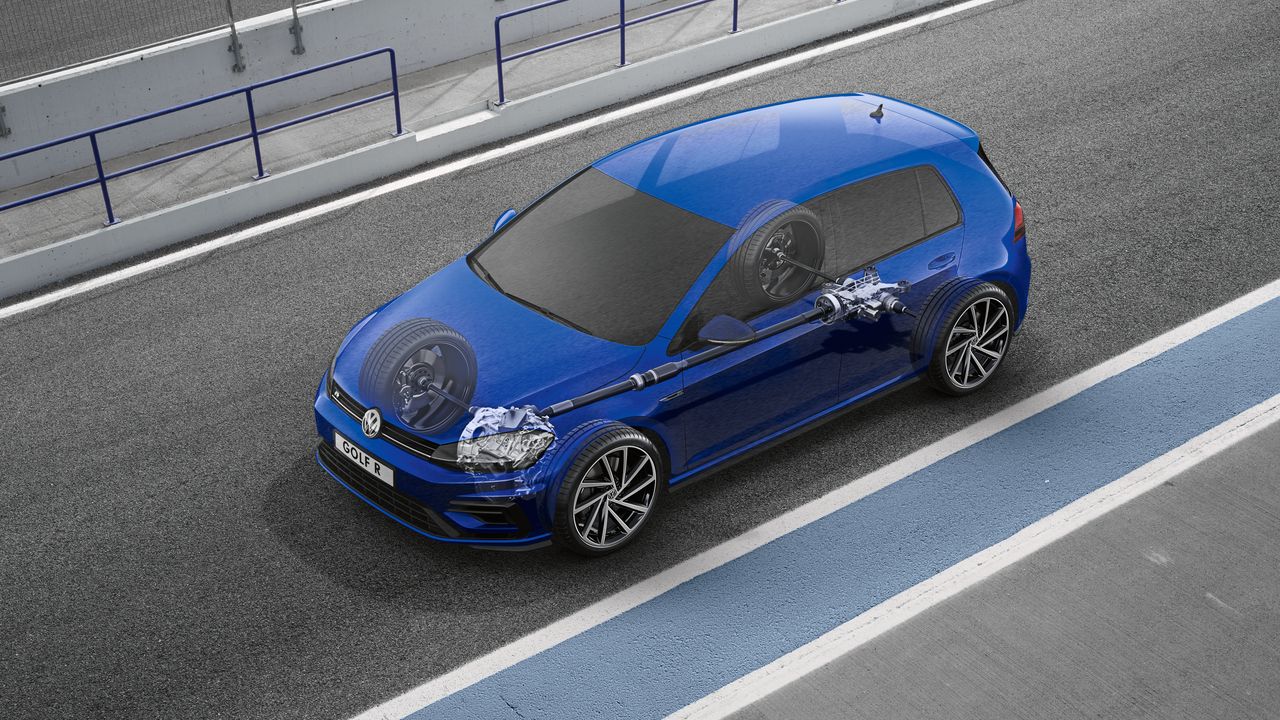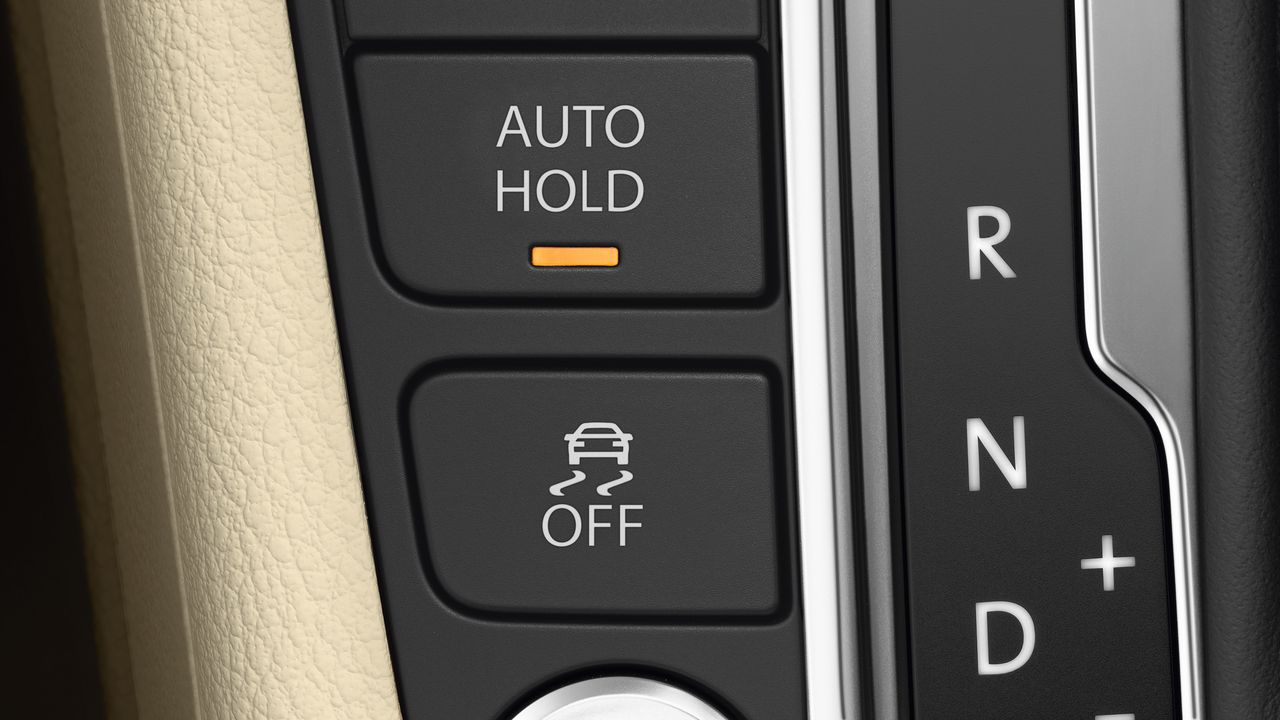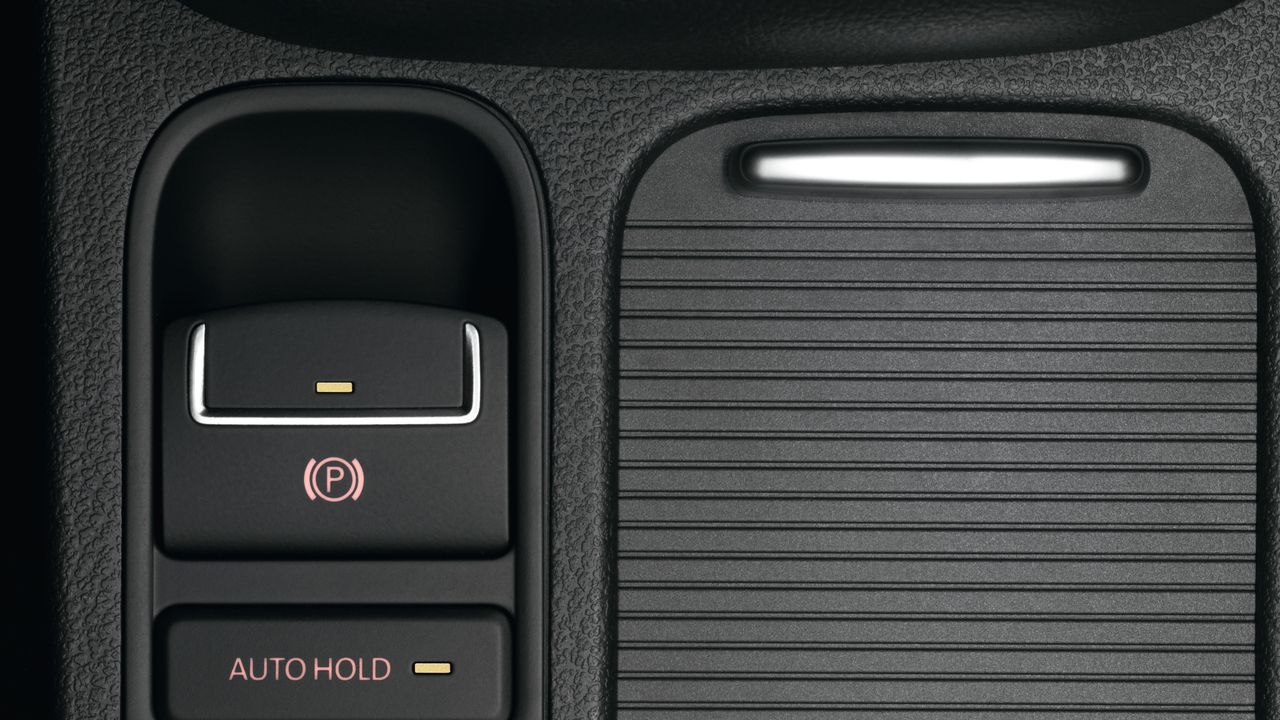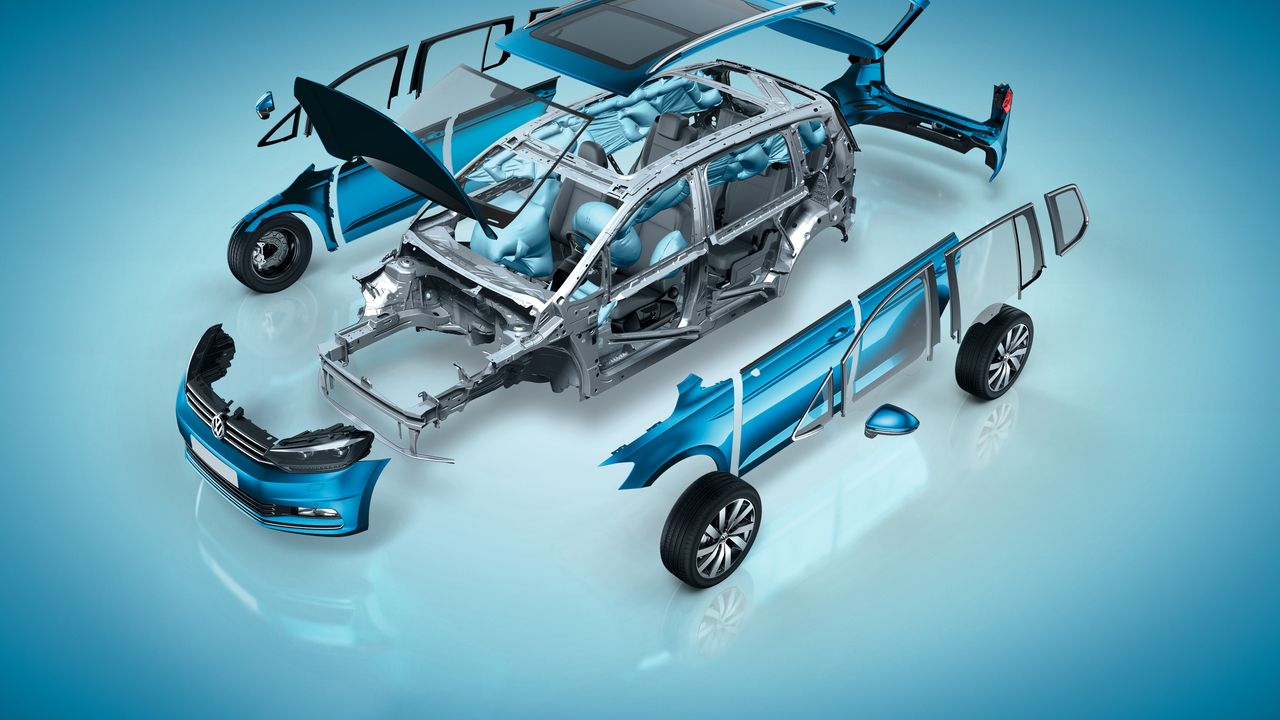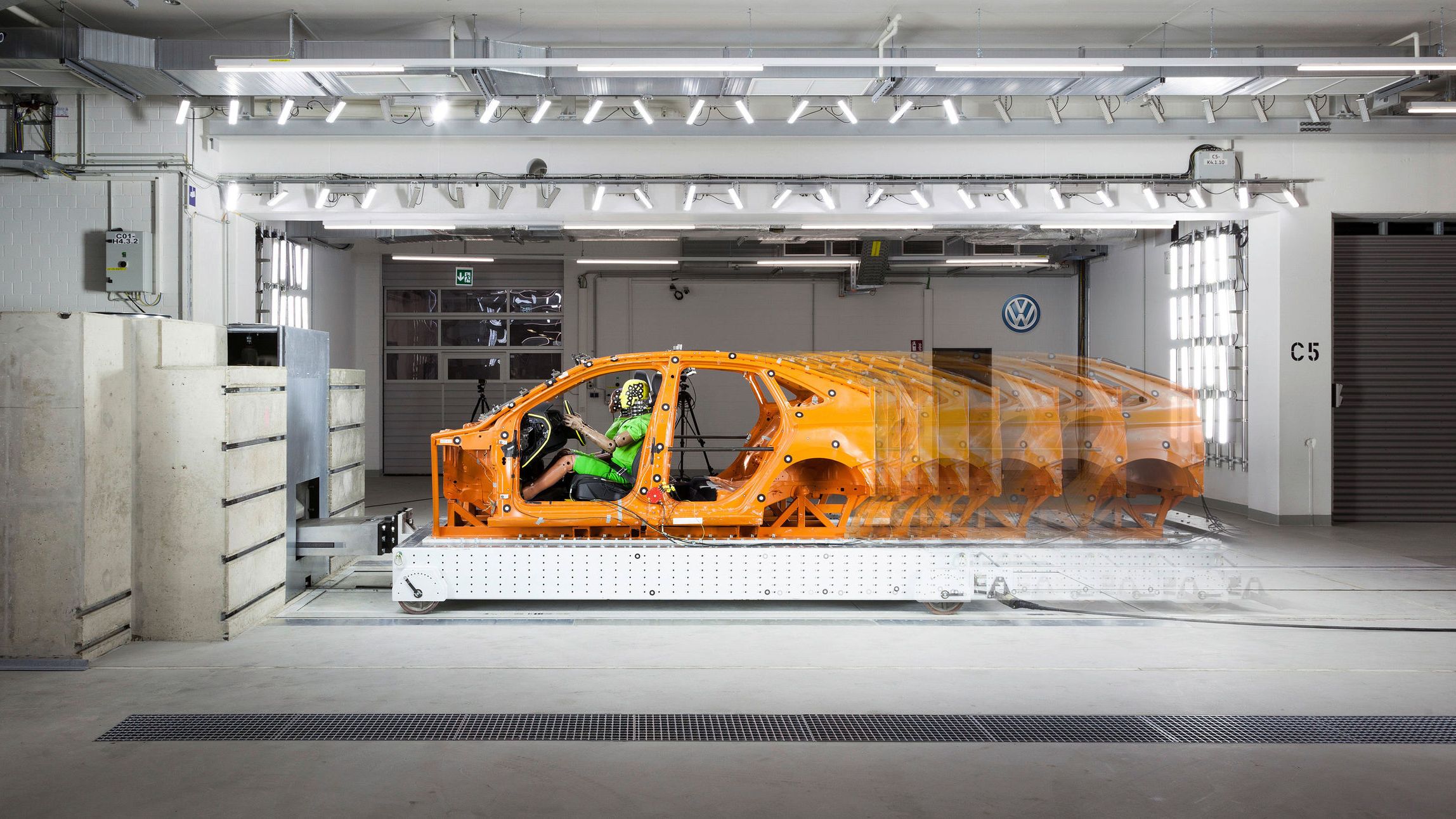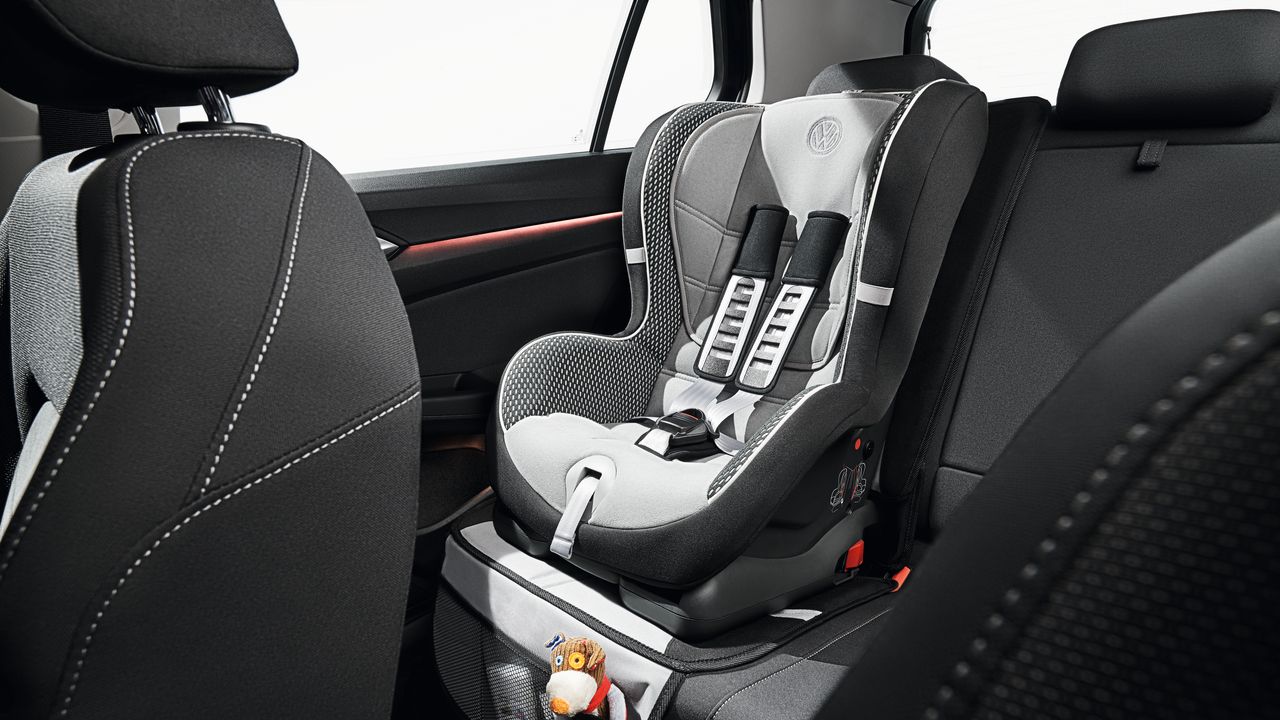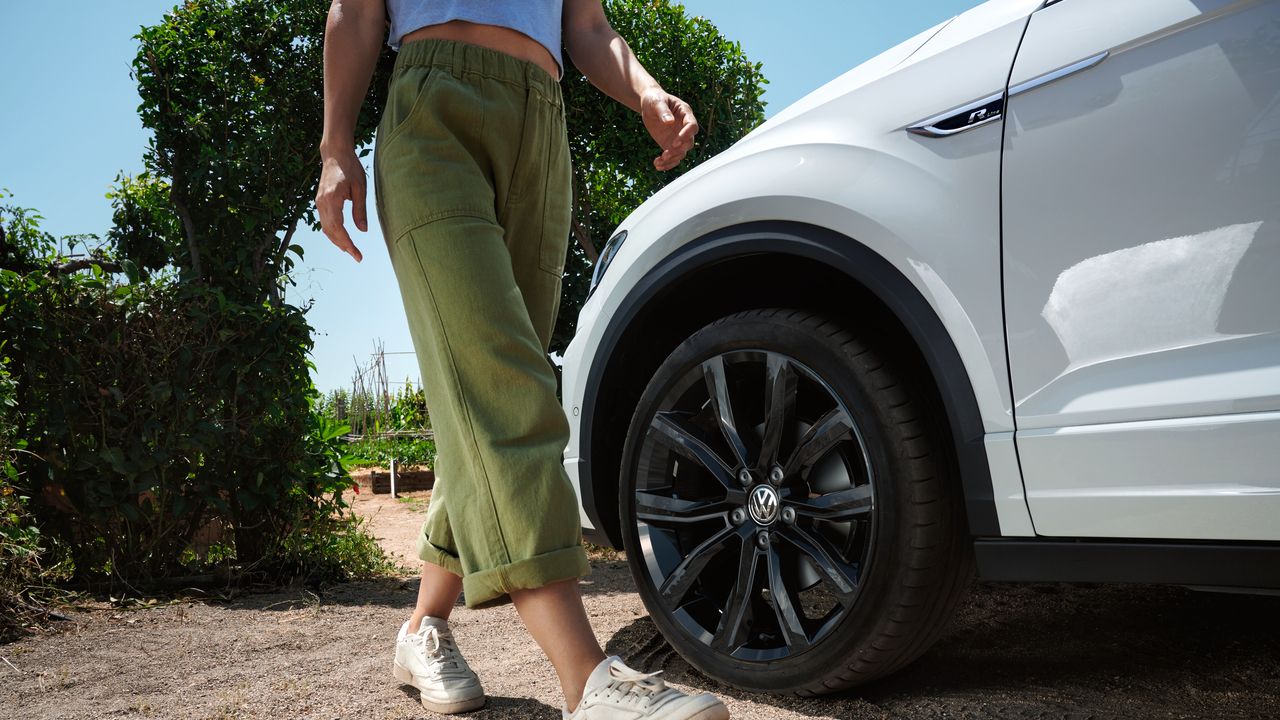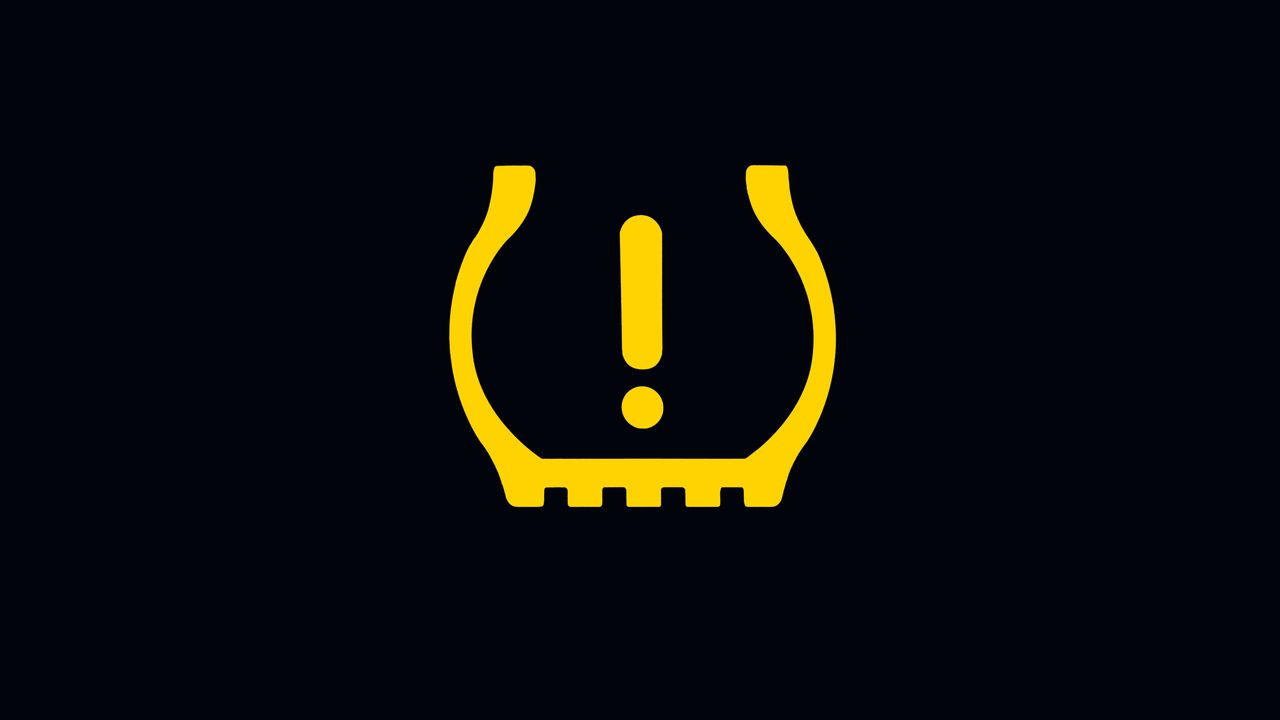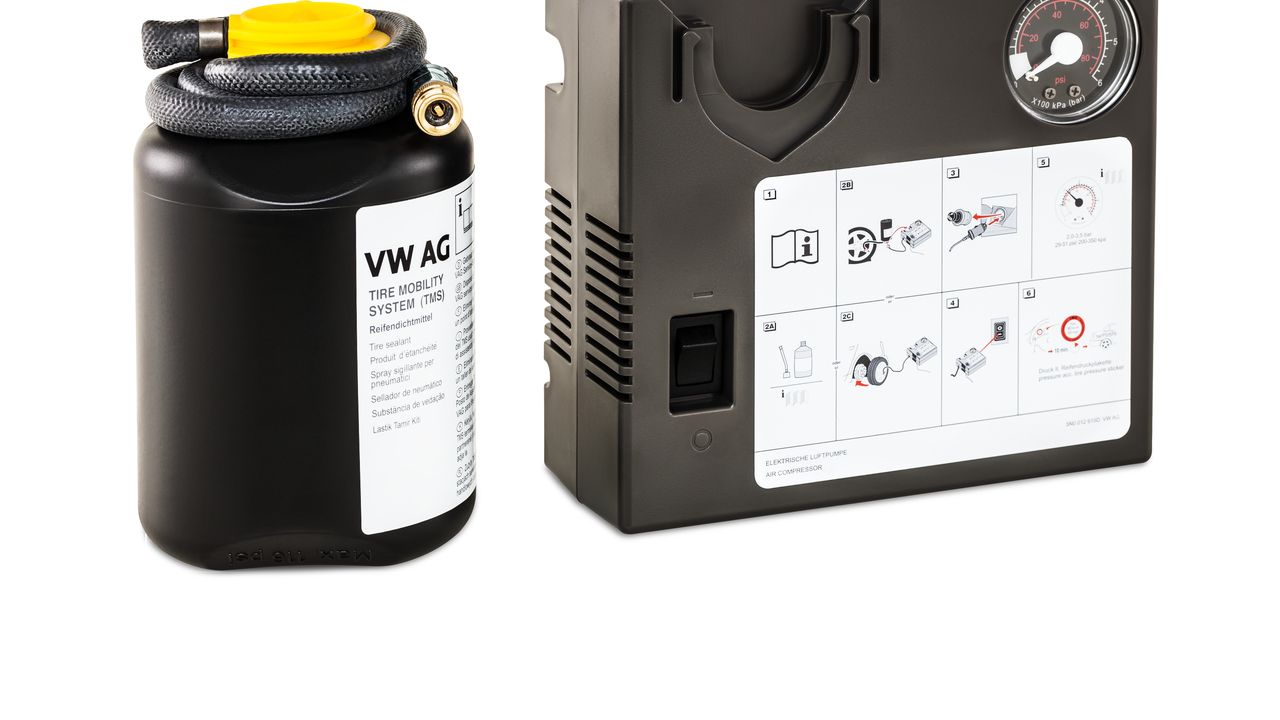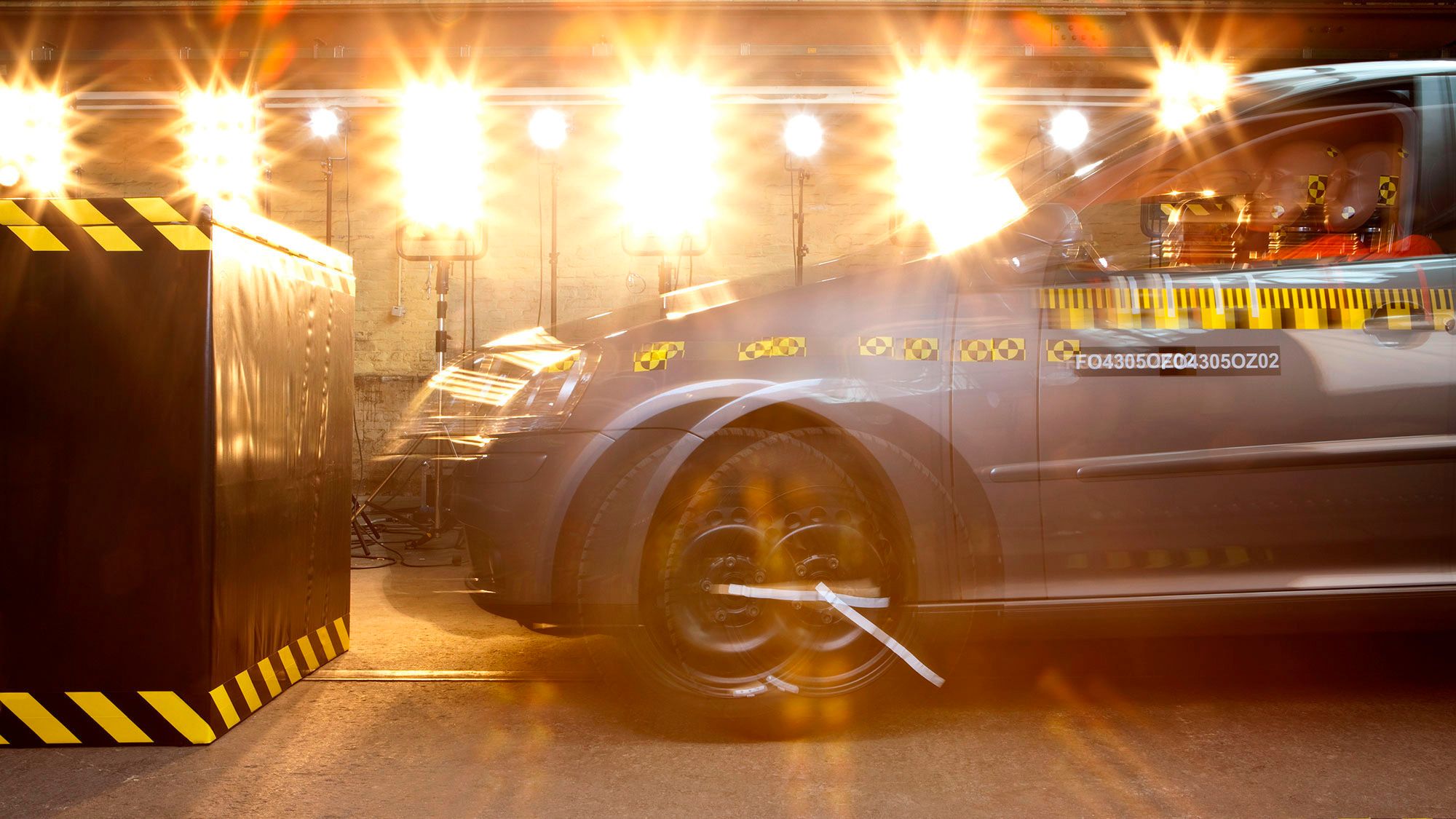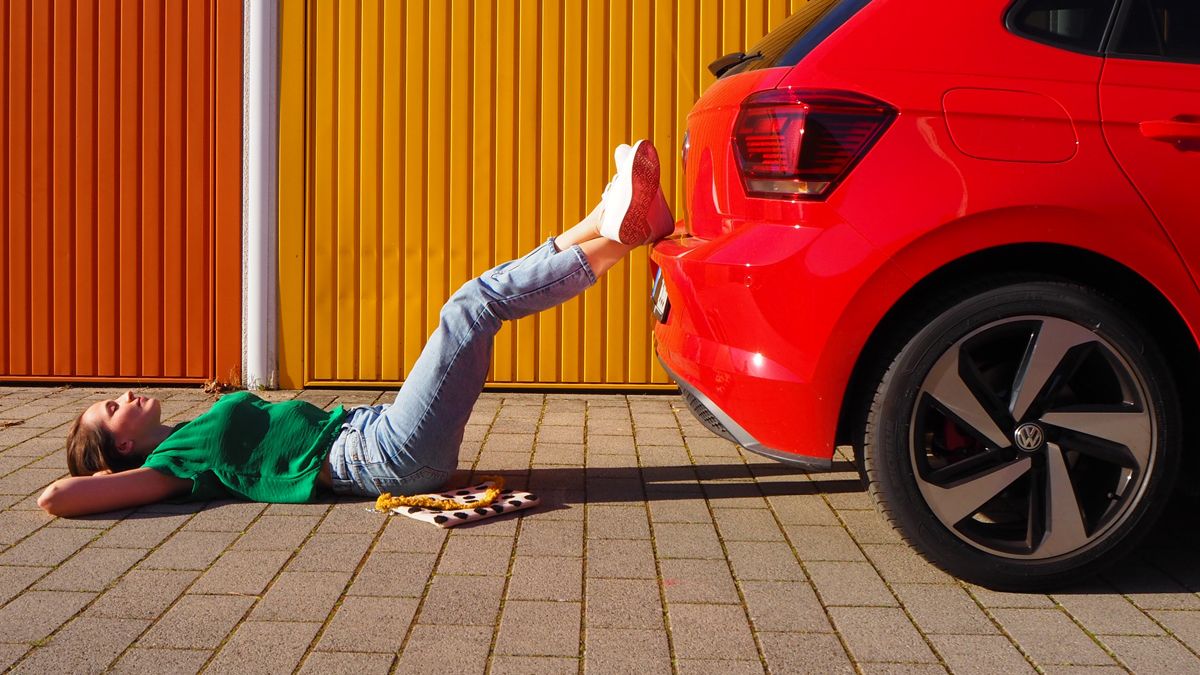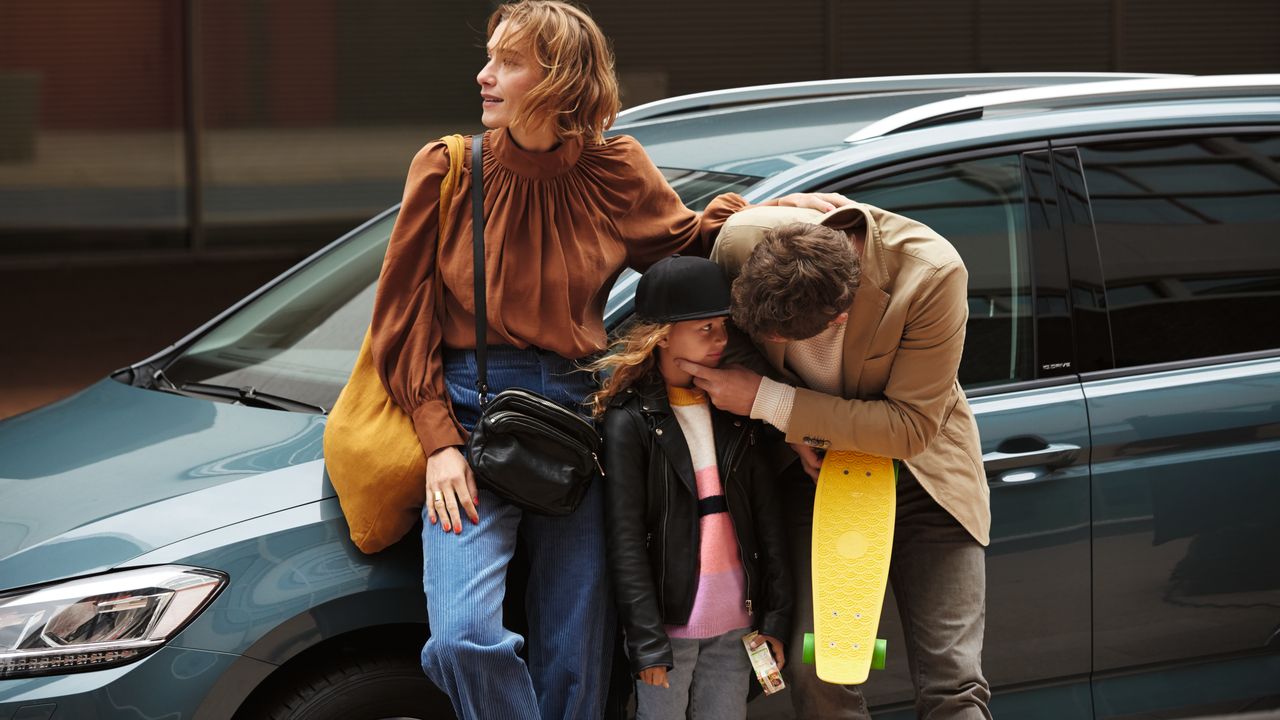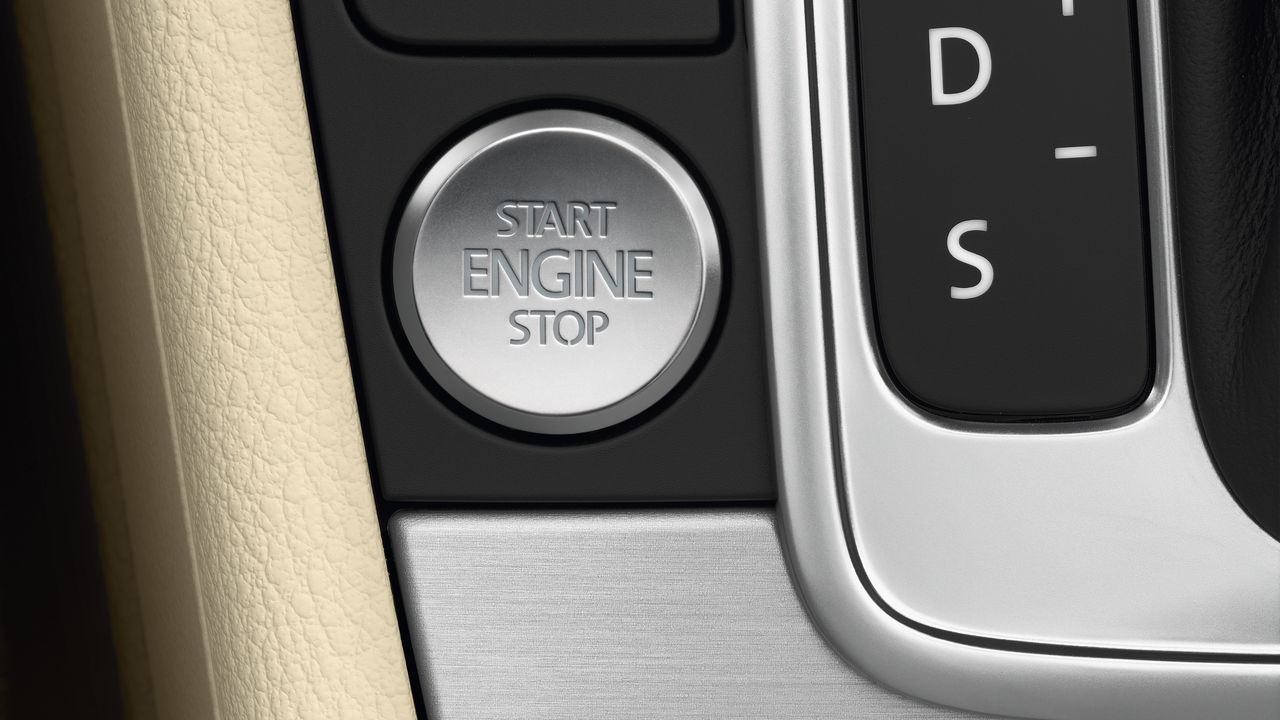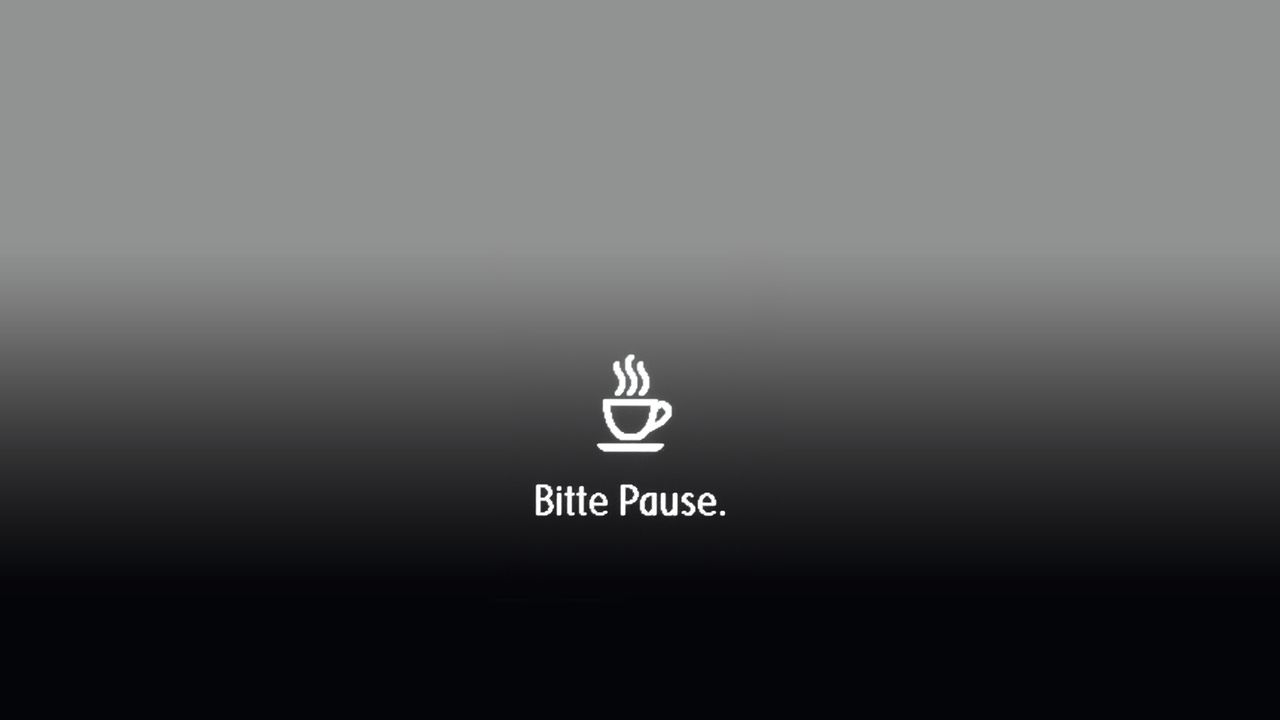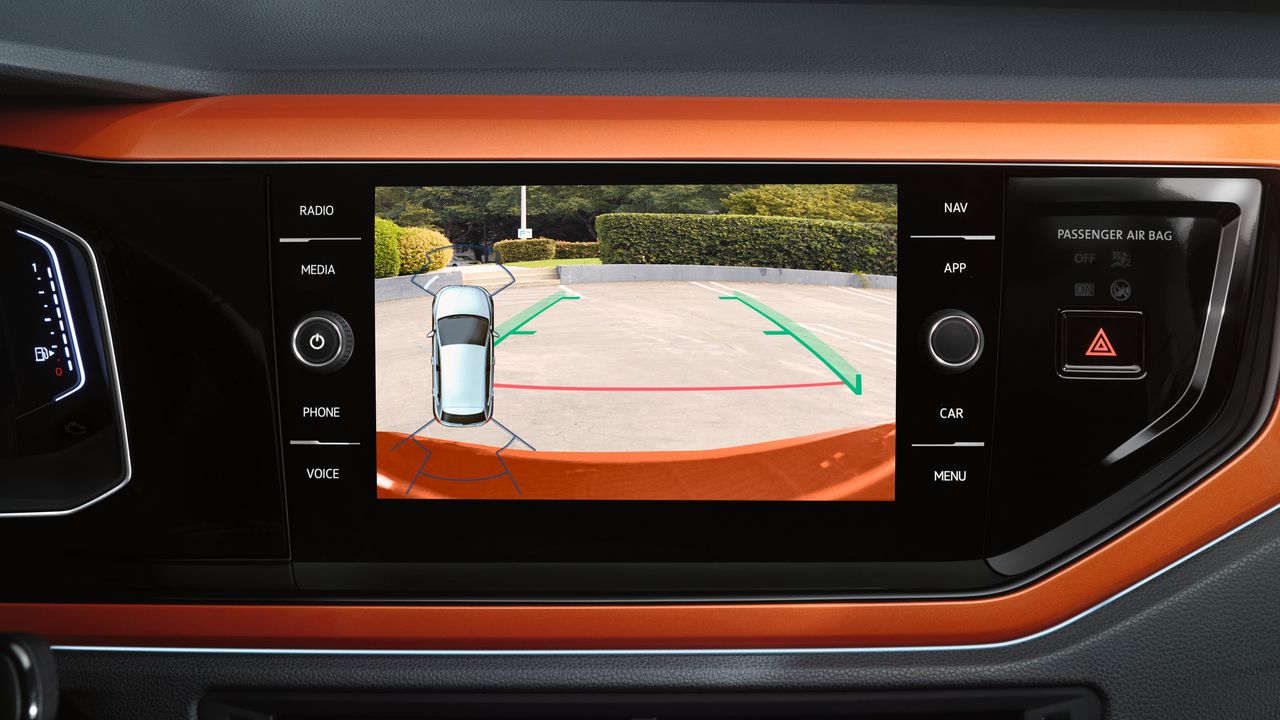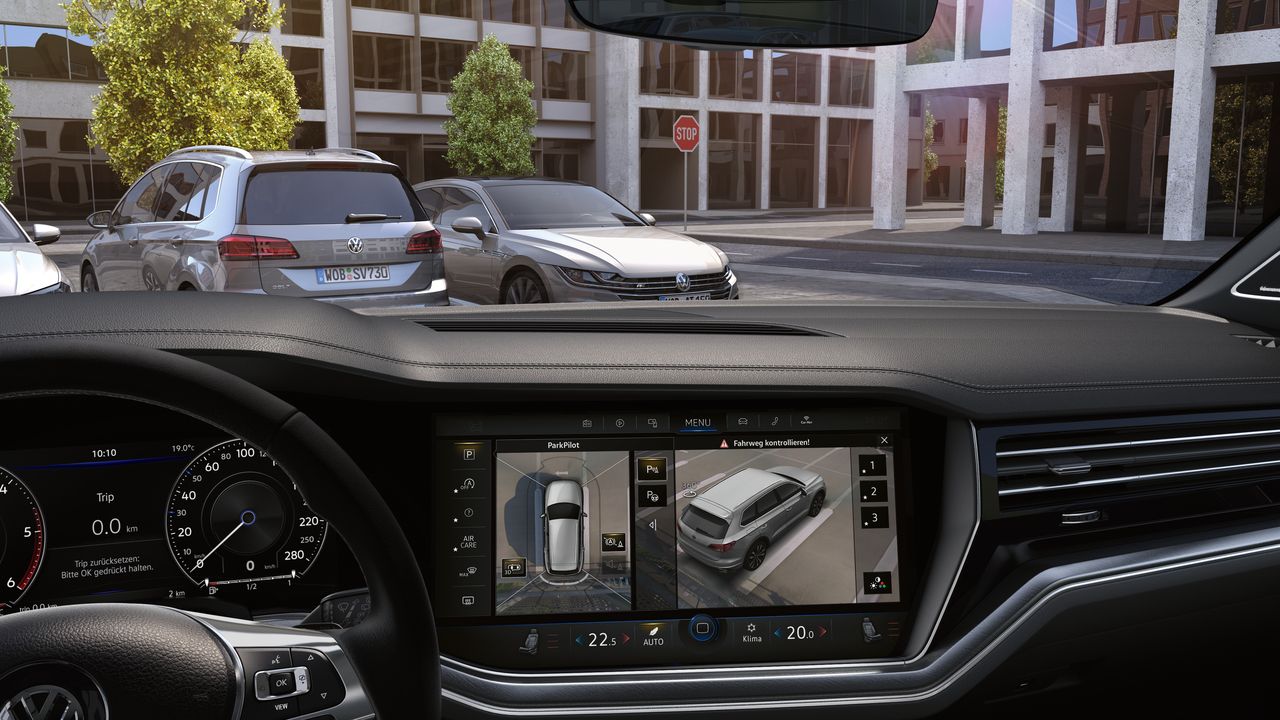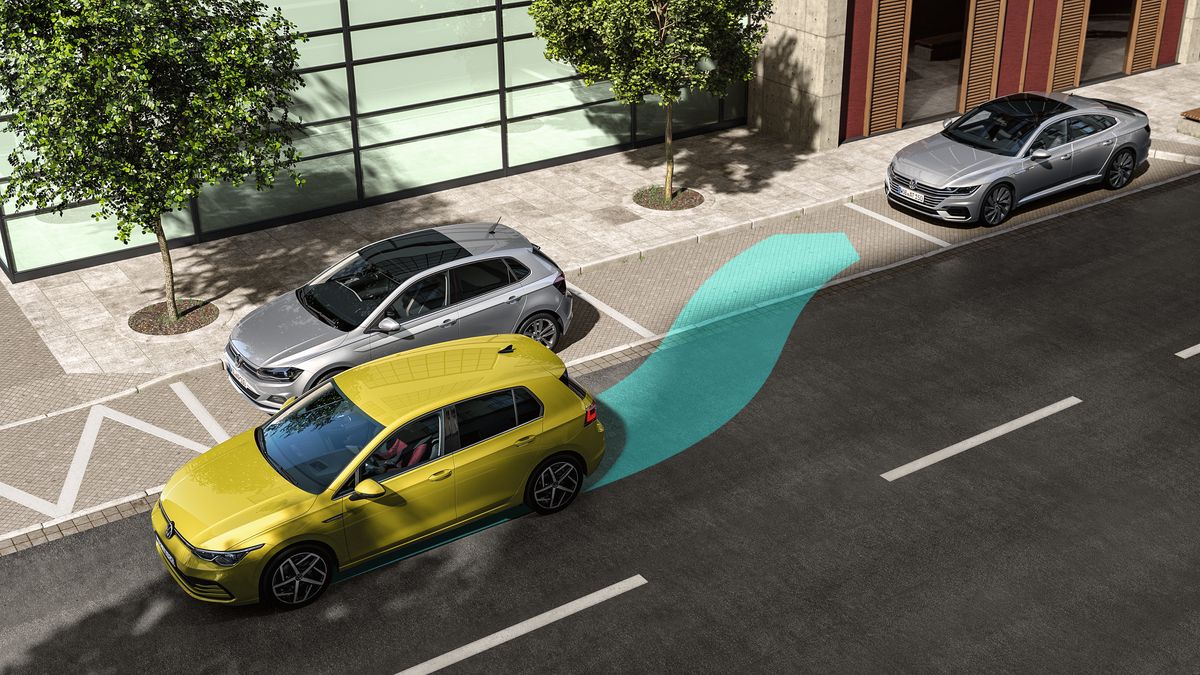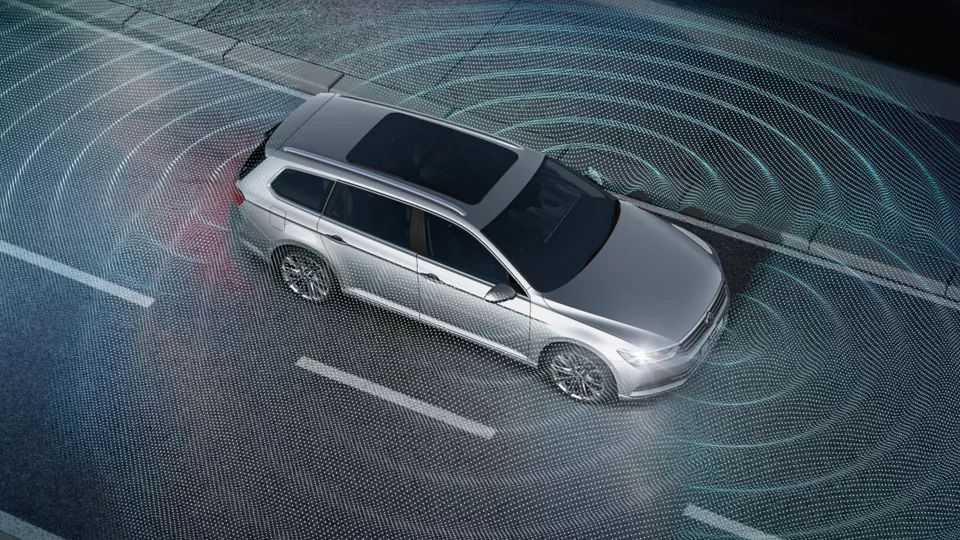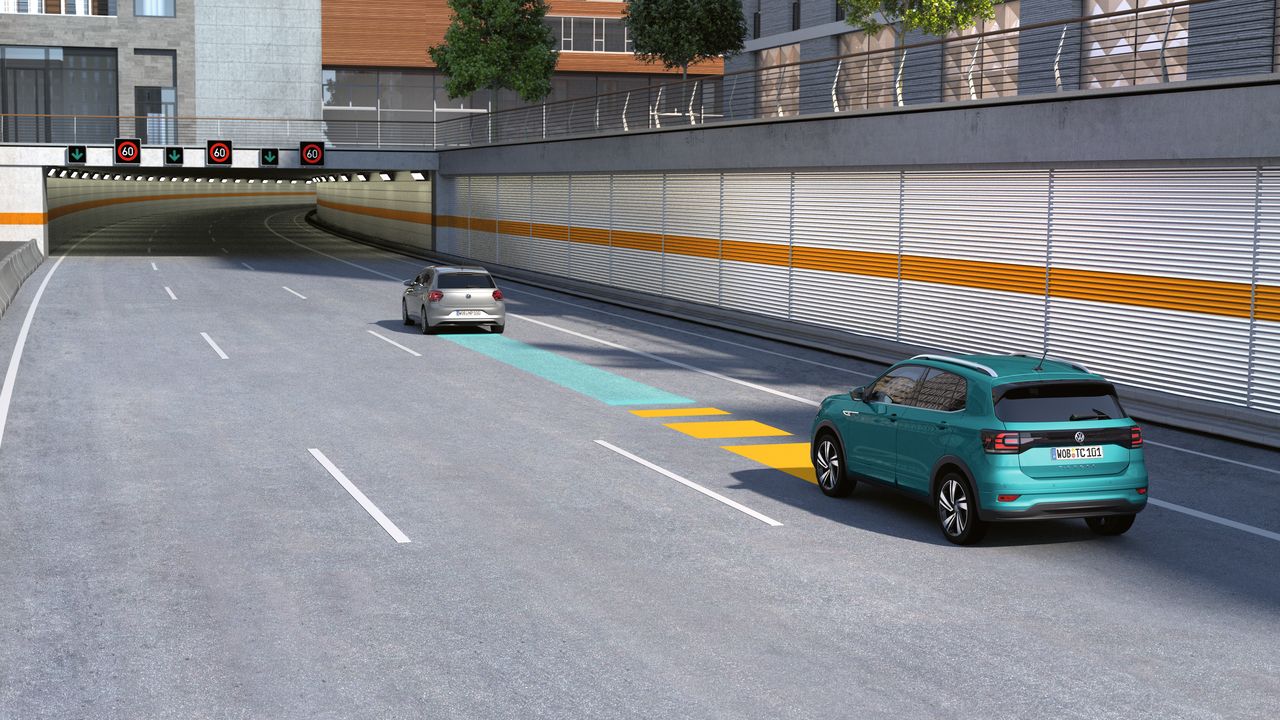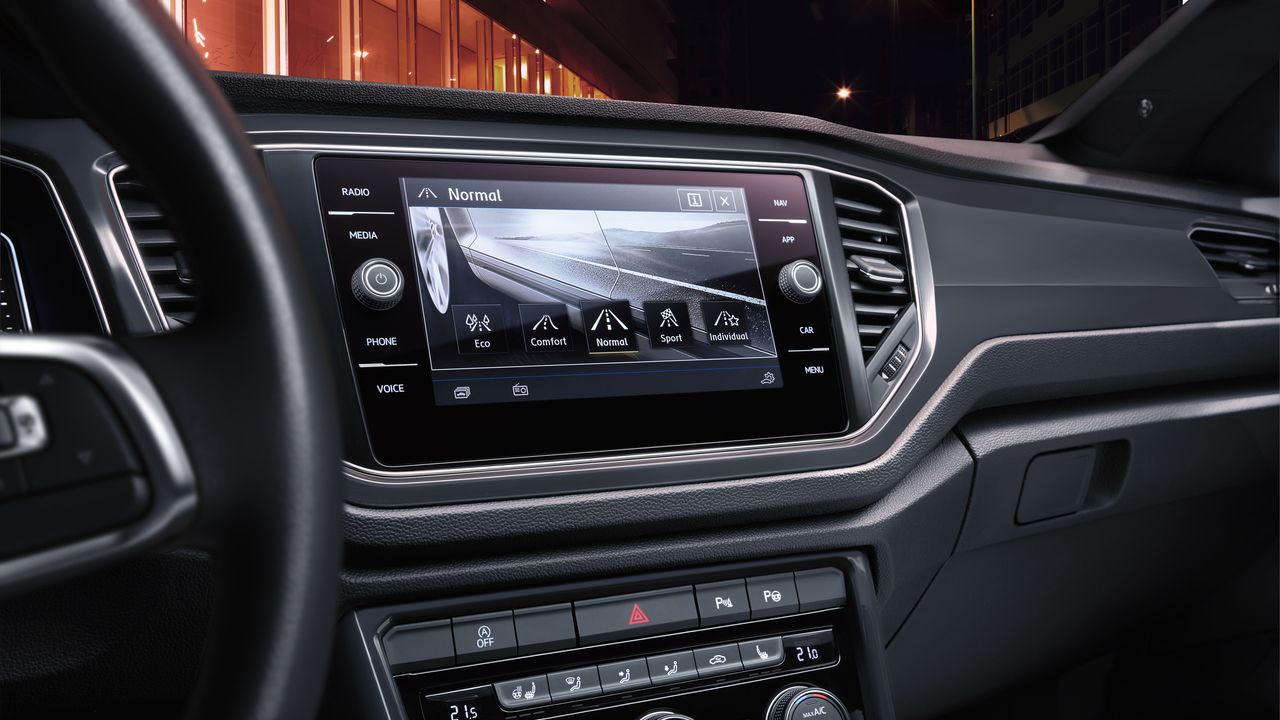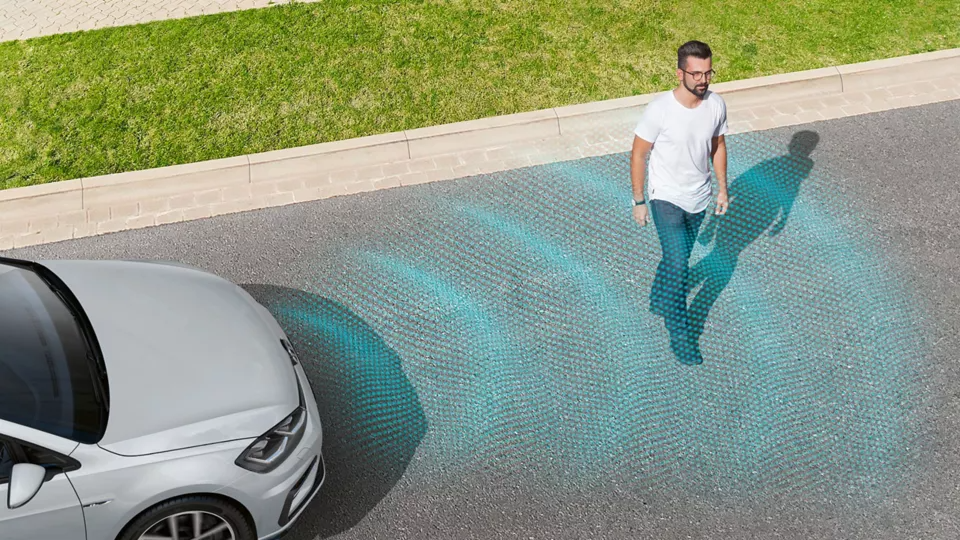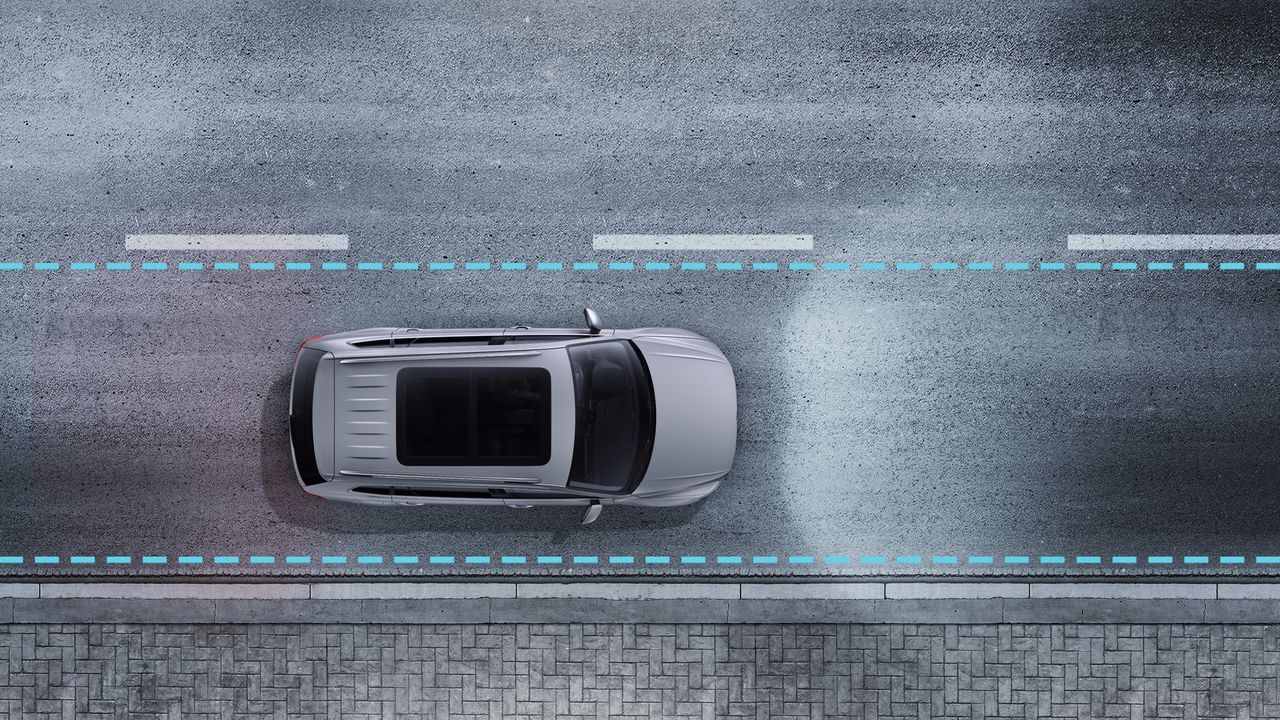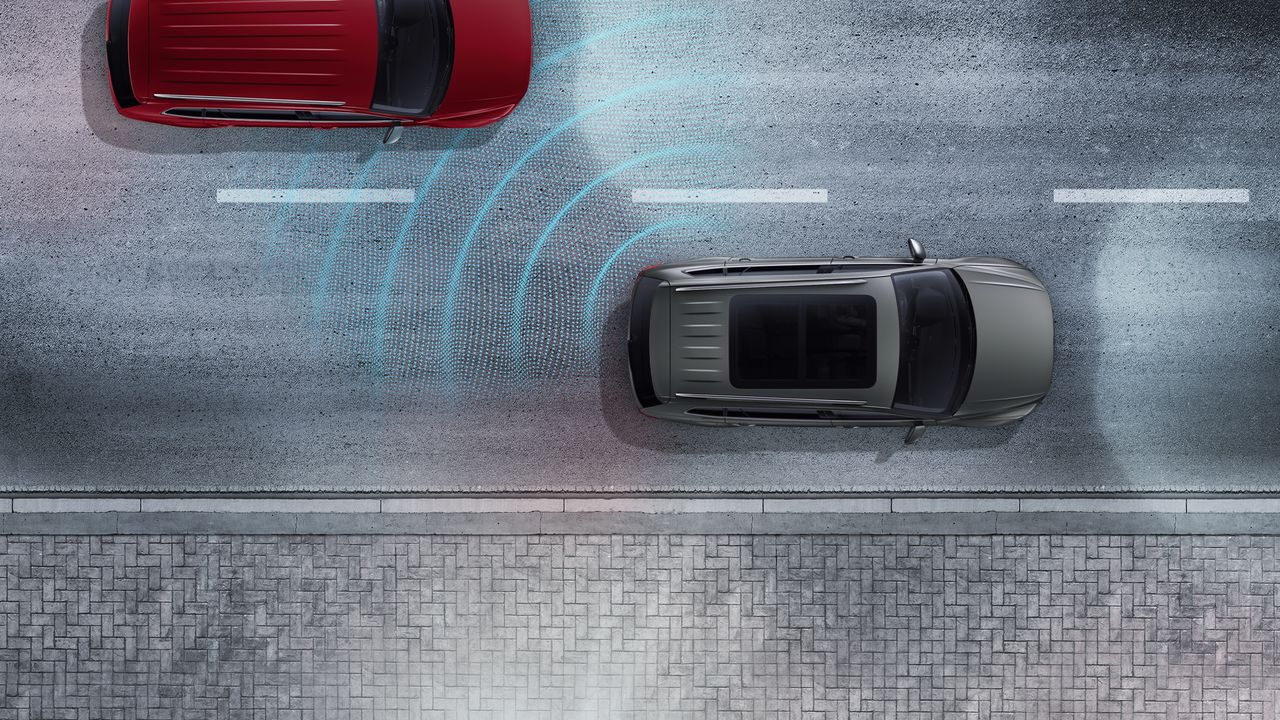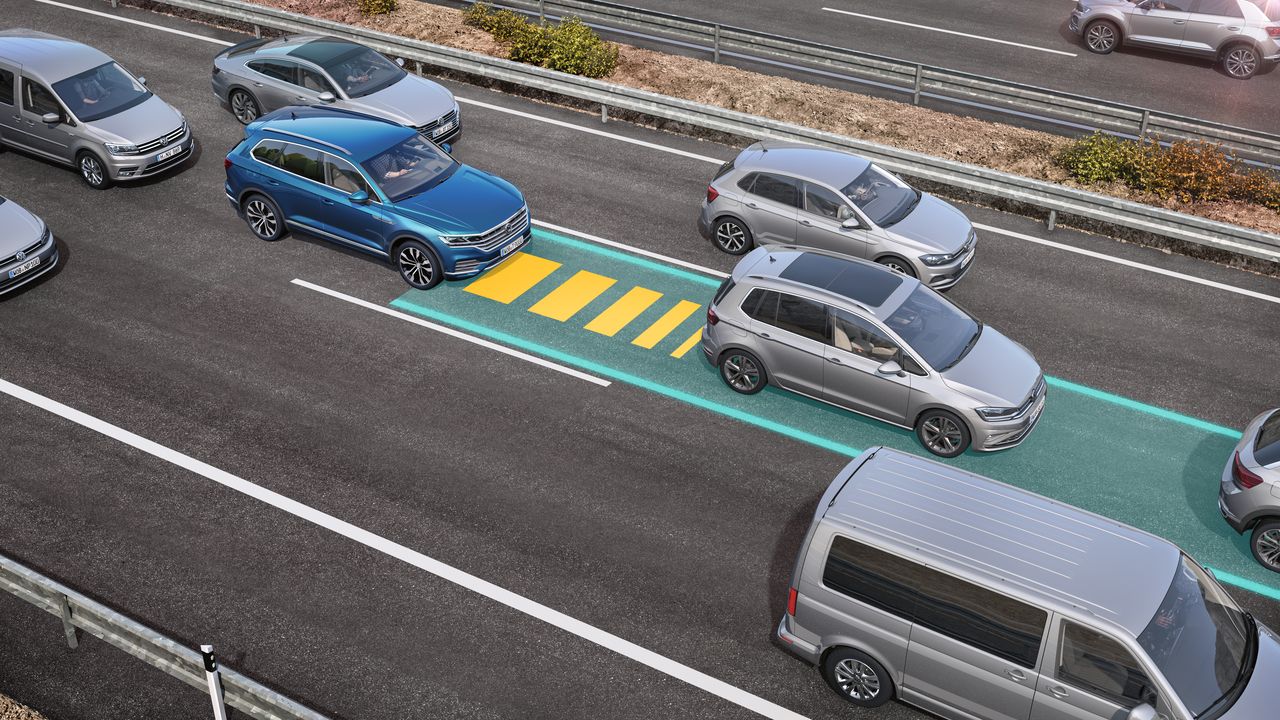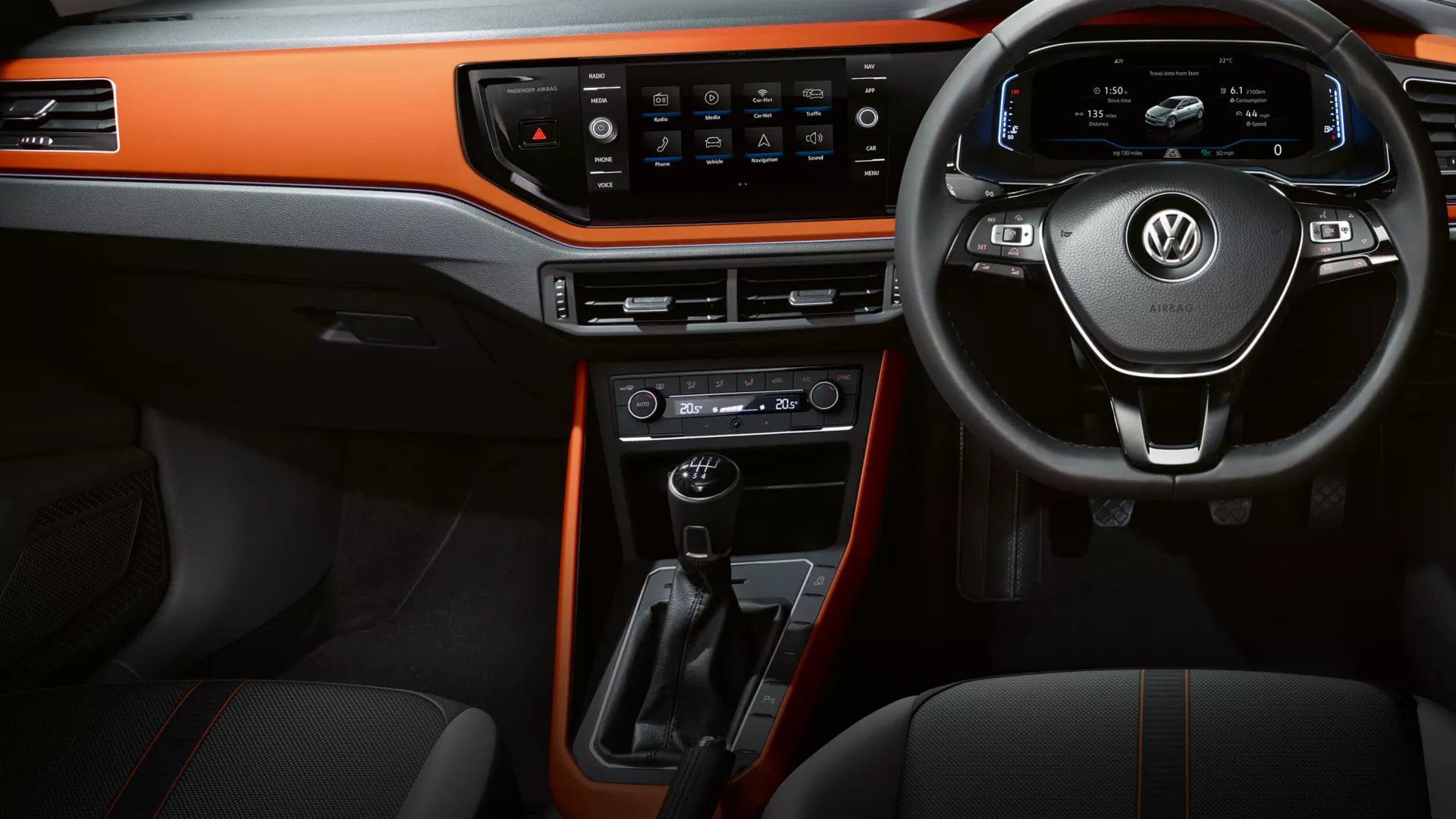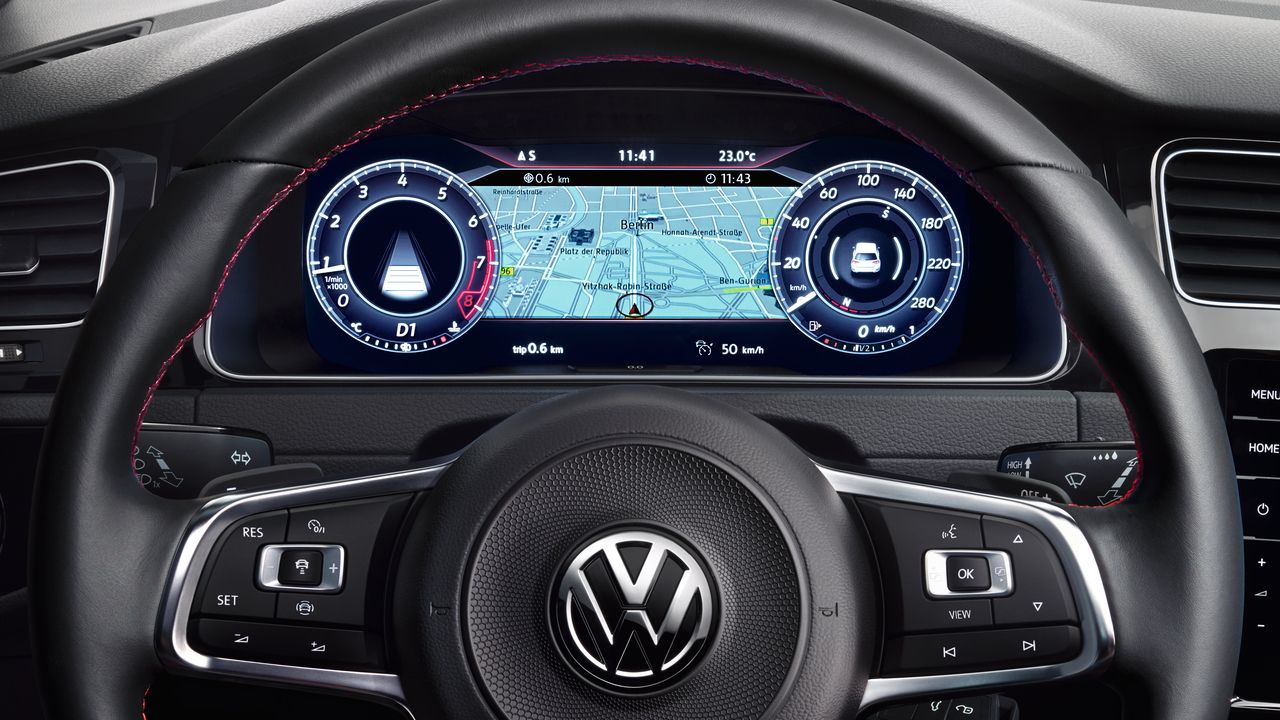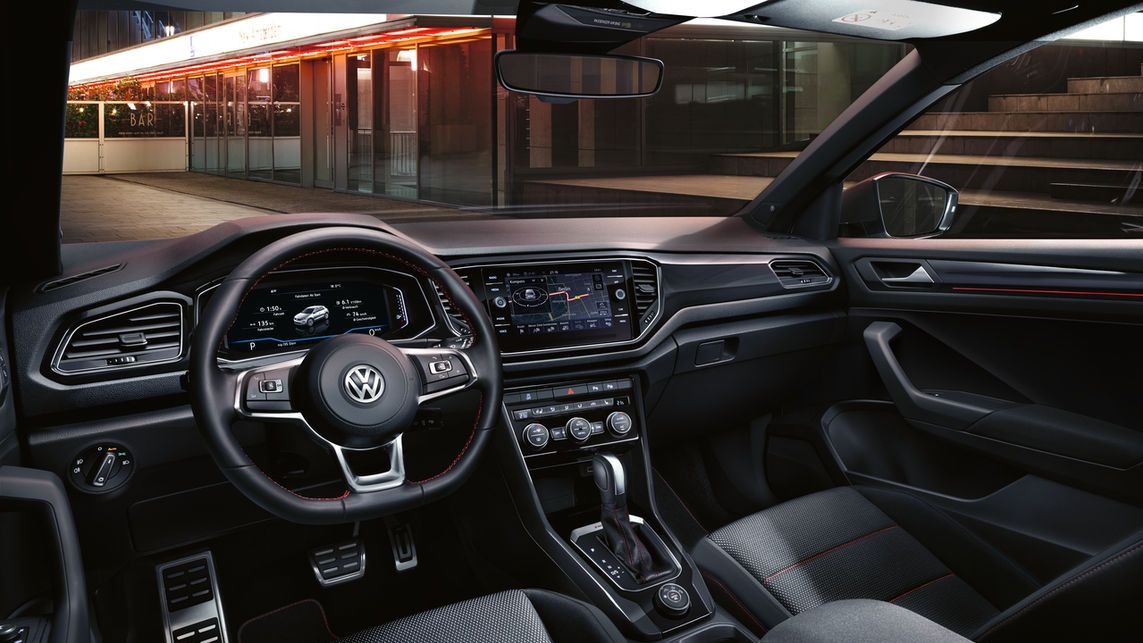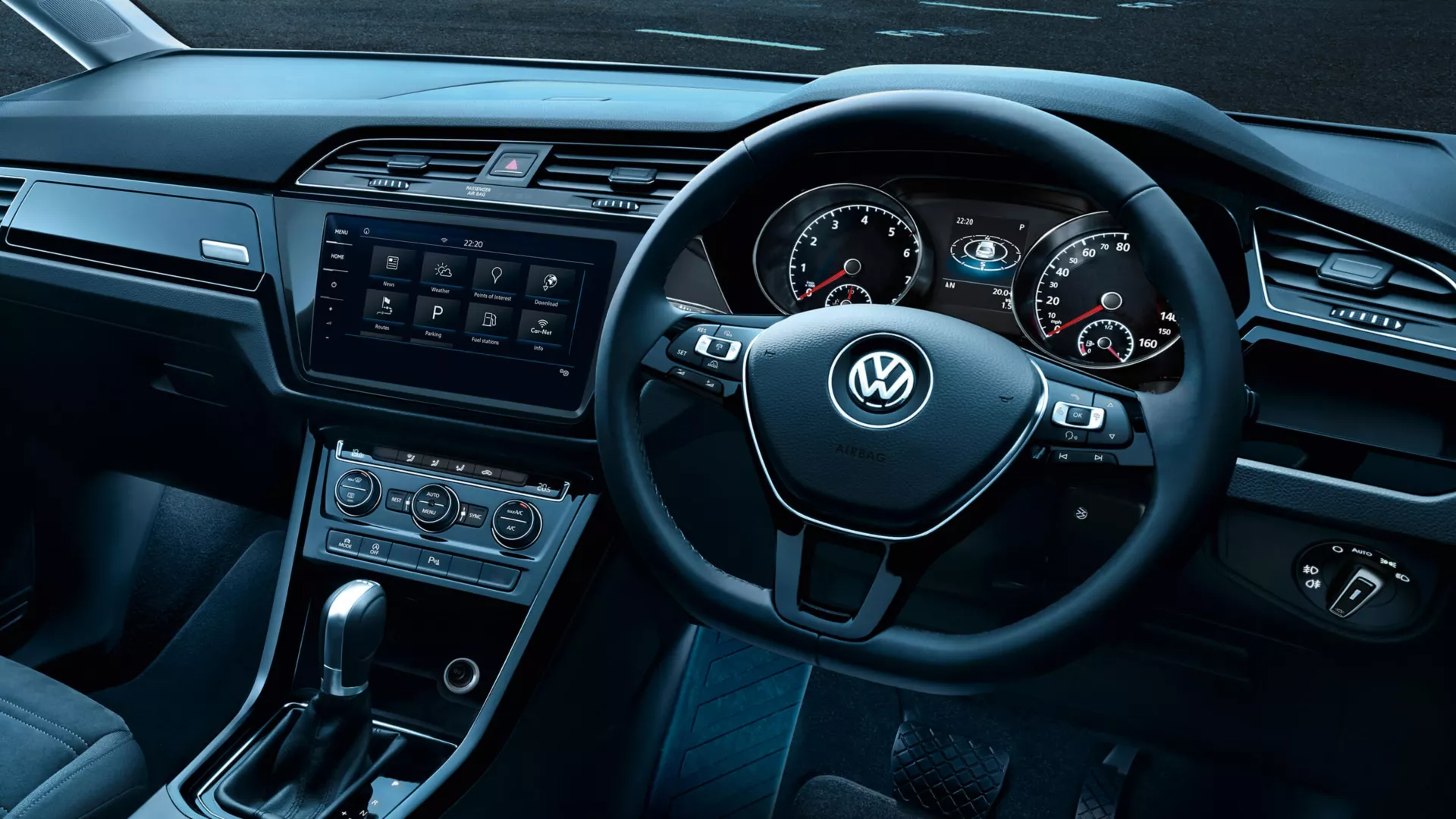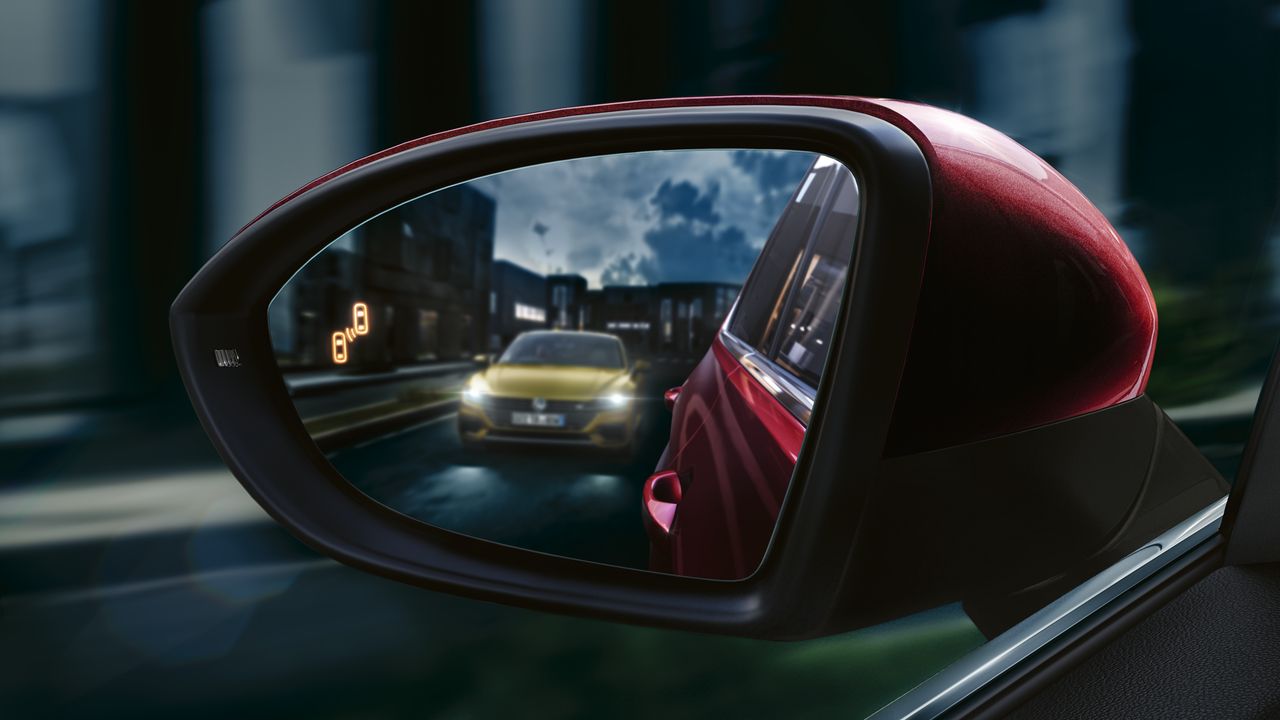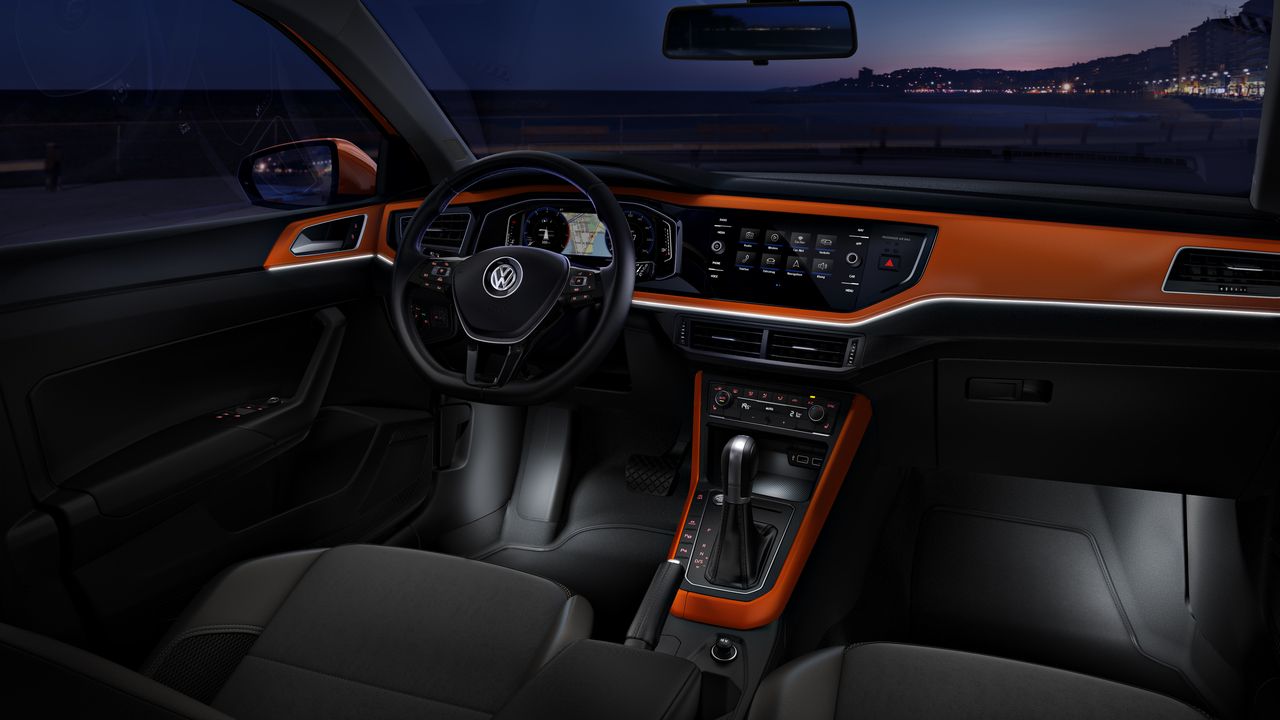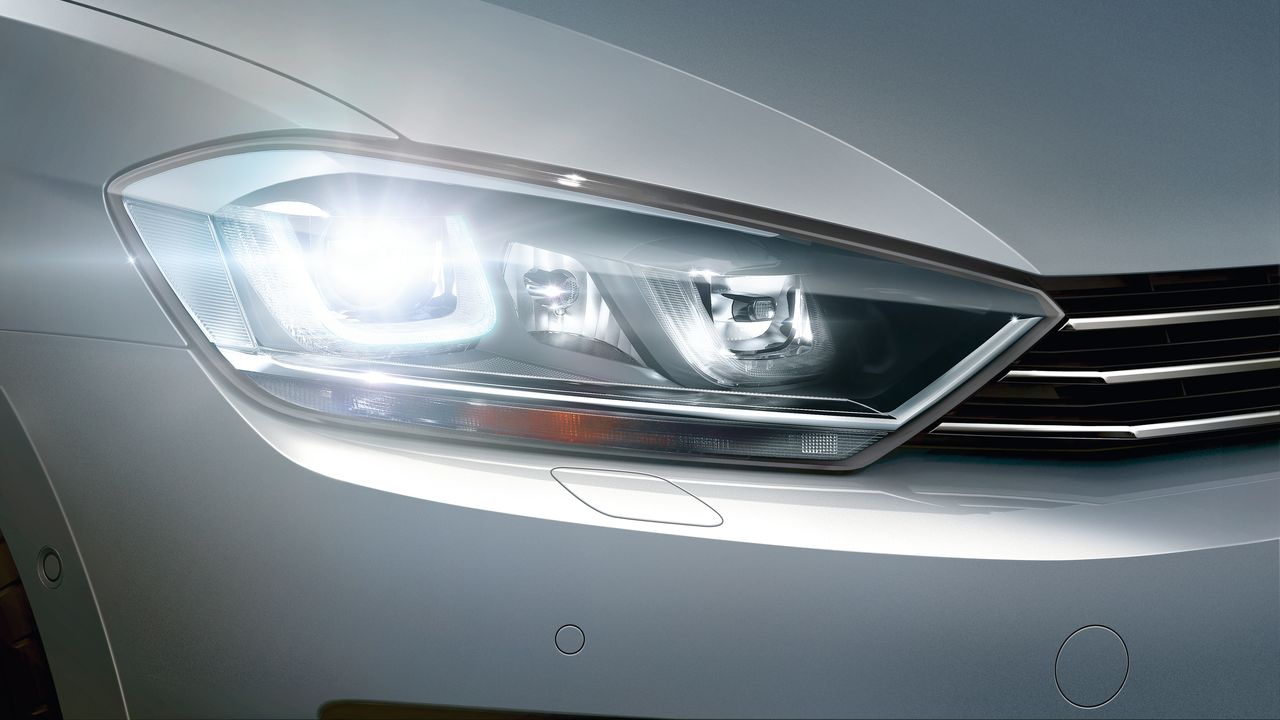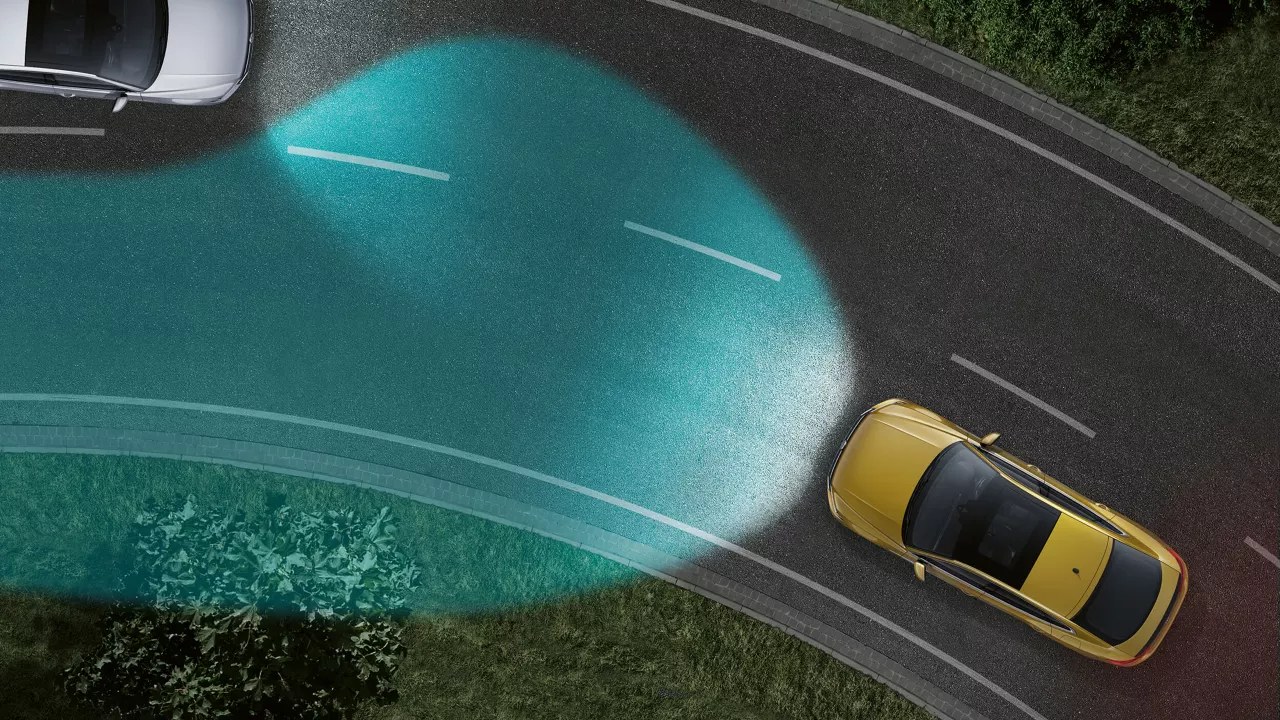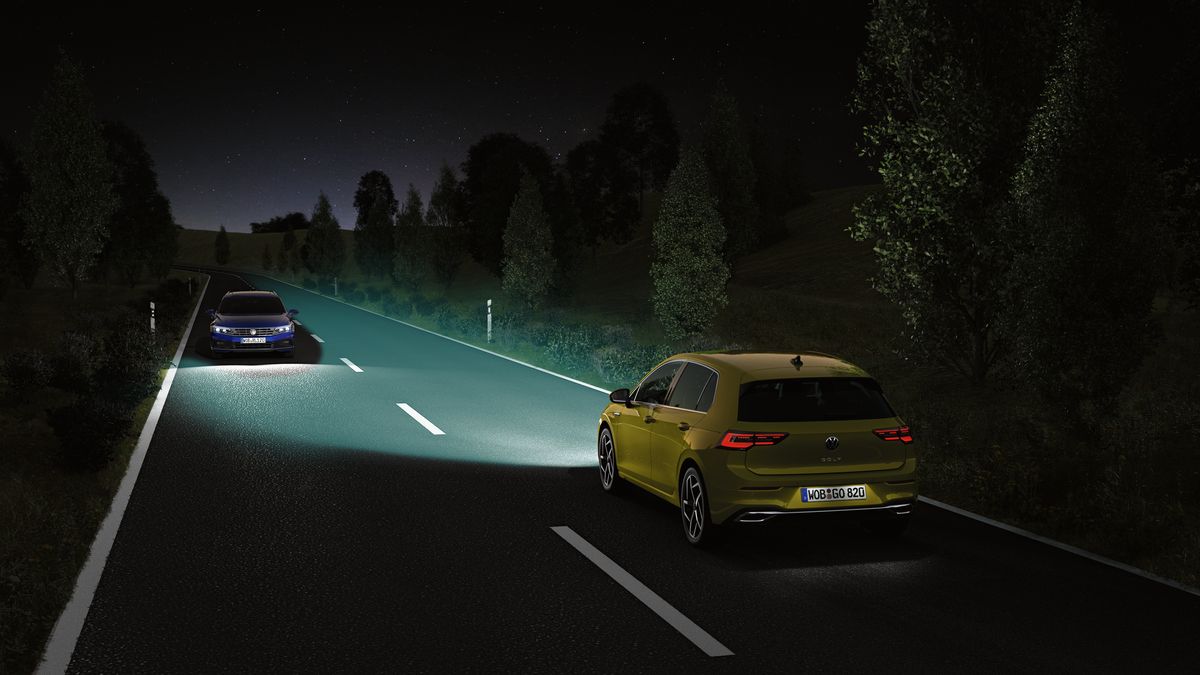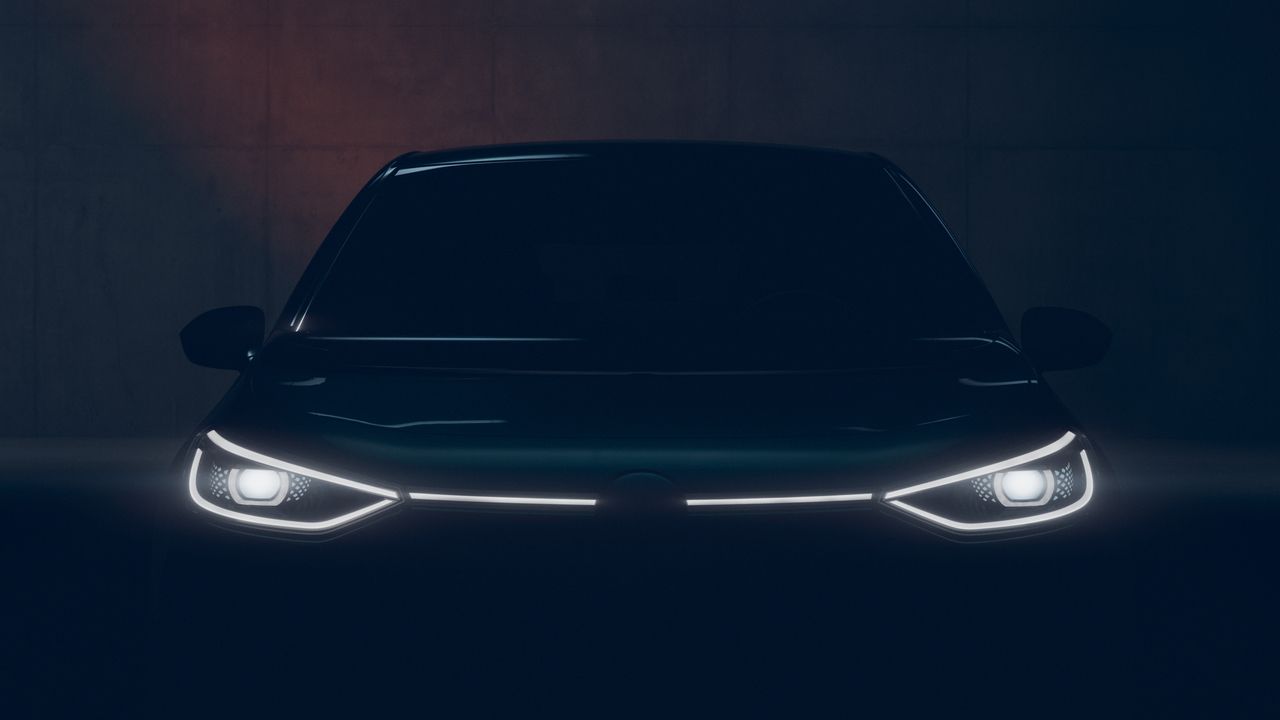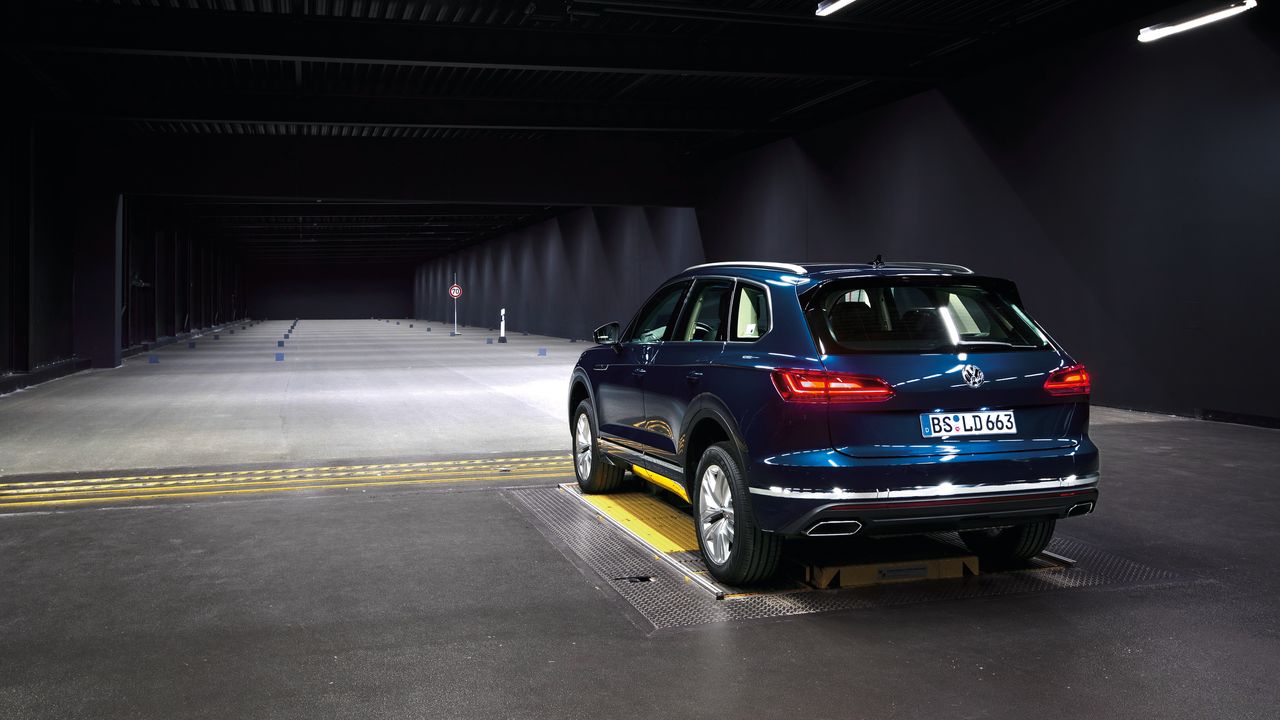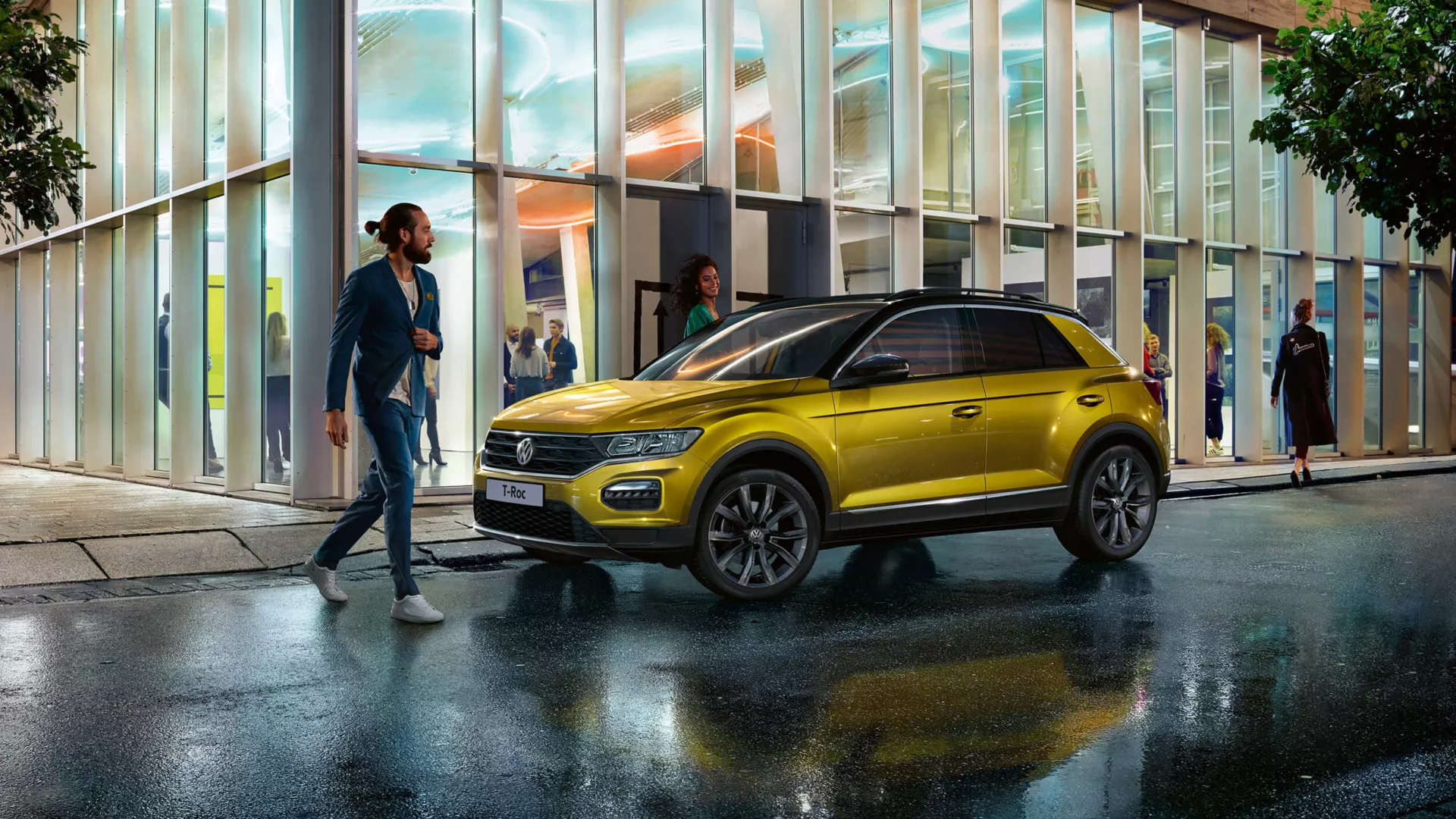All of our technology explained
Engines
Award-winning TSI petrol engines and responsive, efficient, and quiet TDI diesel engines.
Petrol engines
Our award-winning TSI petrol engines mean you no longer have to choose between performance and economy. Small, light and powerful, they blend the best of our TDI diesel and
FSI (Direct Injection) engines. The result is outstanding fuel saving, lower emissions and, best of all, greater performance.
Maximum power meets minimum consumption. When you drive one of our TSI cars, you don't have to choose between performance and economy. TSI engines offer an enjoyable and involving drive while cutting fuel consumption and CO2 emissions. They are less harsh on the environment, kinder on your wallet, and best of all, they're great fun to drive. The benefits are clear: that less can be much, much more.
Experience power redefined. eTSI with mild hybrid technology is a significant new feature. A 48 V belt-driven starter-alternator provides extra assistance for the engine when starting and cruising at low speeds. The lithium-ion batteries are charged under braking and while coasting; the combustion engine is switched off as much as possible while the vehicle is moving, in a barely perceptible way. This achieves low consumption and emission values with excellent performance unmatched by systems without an electric boost. In fact,consumption is reduced by up to 0.4 l/100 km.
You enjoy excellent driveability and outstanding fuel economy. Acceleration is instant, whichever gear you're in. So overtaking is safer and you can power smoothly up hills with no delay. Either TSI or eTSI technology are available on all our vehicles.
As responsible car makers we wanted to make our petrol engines even cleaner and more efficient, while still being fun to drive. Our aim was to create engines that used less fuel and produced lower CO2 emissions without sacrificing power.
The solution our engineers came up with was both elegant and ingenious: an engine that combines petrol direct injection and turbocharging, and in some cases twincharging - a turbocharger and a supercharger working together. The TSI engine was born.
The effect is to combine the benefits of both petrol and diesel power units: smooth and quiet on the road, TSI delivers high torque - pulling power - throughout the acceleration range with little discernible turbo lag.
The successful TSI formula combines a number of different elements:
Smaller engines At the heart of TSI is a smaller engine. It's more efficient, as there is less power loss resulting from friction. It's also lighter, so the engine has less weight to shift in the car.
Direct petrol injection with charging Direct petrol injection is combined with a turbocharger or charge compression with a turbo and a supercharger (early variant 1.5 TSI Evo engines) working in tandem. This enhances the engine's combustion efficiency so the TSI engine power output is much higher than that of conventional, naturally aspirated engines.
Torque when you want it On the 1.5 TSI Evo 150PS the engine-driven supercharger operates at lower revs, with the turbocharger - powered by the exhaust gases - joining in as engine speed rises. The supercharger is powered via a belt drive directly from the crankshaft. This provides maximum pulling power on demand, even at very low engine speeds. TSI engines are designed to deliver maximum torque from engine speeds as low as 1,400 rpm. And that has the twin benefit of not only increasing your driving pleasure but also cutting fuel consumption.
We never stop refining our TSI technology. Some of our latest ideas for the 1.5 TSI Evo 150PS include:
More ways to save weight These range from a lightened cylinder head cover and a weight saving per camshaft to the refined design of the cylinder head itself.
Optimised fuel mixture A new injector with six fuel bores for electronic direct injection helps achieve this. The injector jets have been realigned to give more efficient distribution of the fuel mixture in the combustion chamber.
Charge-air intercooling The turbocharger has a water-cooled intercooler with a low-temperature circuit independent of the engine cooling system. As a result we've cut the volume of the charge air system by more than half, allowing a high charge pressure to build up much more quickly. This gives improved dynamics because it reduces the time it takes to achieve maximum charge in the combustion chambers.
International Engine of the Year awards
Our pioneering technology has impressed motoring experts from across the world. Our TSI range has won the 1-litre to 1.4-litre category of the prestigious International Engine of the Year Awards for five years running and was voted the International Engine of the Year and Best Green Engine.
"Volkswagen not only attained an overall victory, but also won the 'Best Green Engine' award. This shows that driving fun and fuel efficiency can certainly be unified in one package."
Dr Rüdiger Szengel, Head of Volkswagen Petrol Engine Development, commented on TSI:
"Their combination of reduced displacement, direct injection and intelligent engine boosting enables top dynamic performance while keeping emissions and fuel consumption low. Winning awards in three key categories is really a compliment to our development team. TSI engines are genuine trendsetters."
Stop-Start Technology
We think that sitting in traffic is bad enough without knowing that you have to pay for it too. That's why we created
Start/Stop Technology, a really simple way of helping you to save money whenever you come to a stop.
Start/Stop almost completely deactivates your engine whenever you come to a temporary standstill and then smoothly reactivates it whenever you're ready to get moving again.
Once you've stopped, you simply slide the car into neutral gear, release the clutch and Start/Stop technology deactivates your engine. Then, when you're ready to get going again, you simply dip the clutch and the system turns everything back on. If you're driving an automatic, it's even easier; the system kicks in and automatically deactivates your engine whenever you've stepped on the brake and reactivates it whenever you press the accelerator.
Start/Stop technology is available on almost all Volkswagen models. Simply look for it in the description when selecting your engine.
Diesel engines
Super-efficient, responsive engines
We're continually refining our Turbocharged Direct Injection (TDI) diesel engines to make them even more efficient while still being great fun to drive.
They offer refined power, even at low revs, and exceptional fuel economy, which all helps to lower emissions. We are now converting
our full range of TDI engines to common rail engines that are responsive, incredibly efficient, cleaner and quieter.
TDI identifies all our advanced diesel engines using direct fuel injection and a turbocharger. TDI engines are economical and smooth with high levels of torque (pulling power) and good energy efficiency.
- You'll enjoy the savings. Economical fuel consumption over the entire speed range, long service and maintenance intervals, plus low emissions, all combine to keep costs low.
- You'll love the drive. Our turbodiesel engines offer exceptional torque even at low revs. This results in tremendous fun at the wheel, thanks to their effortless acceleration and sparkling performance.
- You'll feel the power. High levels of pulling power over a wide rev range offer real driving pleasure.
TDI identifies all our advanced diesel engines using direct fuel injection and a turbocharger. TDI engines are economical and smooth with high levels of torque (pulling power) and good energy efficiency.
Fuel needs oxygen to burn and the engine has to be supplied with huge quantities of air to get enough. You can solve this problem with a bigger engine - or you can solve it with a turbocharger - as in the TDI. Driven by the exhaust gases, it squeezes air more tightly into the cylinders.
After being drawn through the turbocharger the air is then cooled by passing it through an intercooler (cool air takes up less space than hot air), before entering the combustion chamber where diesel is injected directly into the cylinders at very high pressure through a nozzle. It's this intensive mixing of highly atomised fuel with the cooled compressed air that leads to better, more efficient combustion.
Your driving experience is quiet and refined because effective sound insulation keeps noise to a minimum, while hydraulic engine mounts ensure smooth, low-vibration running.
The turbocharger
To boost power output and torque, we fit our TDI engines with exhaust turbochargers featuring variable turbine geometry. They compress the air required for fuel burning, letting the engine draw in more air while its displacement and revs stay the same.
A turbocharger is powered by the energy in the exhaust gas. It has two turbines. The turbine wheel in the exhaust stream drives a second in the intake stream that compresses the intake air. Before it is fed into the combustion chamber it is cooled by a charge air cooler (intercooler). Because cool air is denser than hot air, more oxygen can be fed into the cylinder to burn the fuel, enhancing power and efficiency.
Overcoming turbo lag
The main disadvantage of a turbocharger is that it needs a certain gas pressure to work, only available when engine revs are high enough. To avoid 'turbo lag' a delay in available power - and be very efficient at lower engine revs, the turbocharger needs to be able to control the exhaust pressure.
A variable turbine geometry (VTG) turbocharger does this with a system of mechanical guide vanes. It alters the cross-section of the exhaust flow inlet on the powertrain side. If the gas pressure falls at slower engine revs, the control system adjusts the guide vanes to narrow the cross-section. This speeds up the exhaust flow and increases the pressure. And as the exhaust gas pressure rises with the engine revs, the control system makes the inlet cross-section larger by altering the position of the guide vanes.
How injection works
The pressure at which the diesel is injected into the cylinder is the key factor in diesel direct injection. The fuel has to mix swiftly with the compressed air in the cylinder. The higher the pressure, the more finely the diesel is atomised for an intensive mixing of the fuel and air particles. This, in turn, leads to better and more efficient fuel burning. The energy from the fuel is used more effectively and emissions are reduced.
We use various injection stages within one power stroke - referred to as multiple injection. Depending on the engine design, revs and load, modern diesel engines use a pilot or double pilot injection, a main injection and a post injection. Pilot injection achieves smooth combustion, ensuring that the extremely high pressures necessary for combustion to take place are reached more gradually. This significantly reduces combustion noise and cuts emissions. Post injection helps the combustion process further, achieving even lower exhaust emissions.
Common rail - third-generation diesel direct injection
The common rail system stores the injection pressure in a high-pressure fuel reservoir referred to as the 'common rail' as it supplies all the injectors. In this system the generation of pressure and the fuel injection processes are separate.
Lines connect all the cylinder injectors to the common rail in parallel, ensuring they all have an uninterrupted supply of constant pressure.
The advantage of common rail is that fuel can be delivered at higher pressure, giving better mixing with air for a more efficient and cleaner combustion. This gives higher performance combined with improved fuel consumption.
The ever-higher injection pressures that make diesel engines cleaner and more efficient than before place big demands on the common rail system. Our latest generation of diesel engines reach injection pressures as high as 1,800 bar. For this reason we make the rail ourselves, and we are the first car maker to do so.
The diesel particulate filter
Our advanced diesel engines are much cleaner than older engines. One important factor is their diesel particulate filters (DPF), which are very effective in cutting emissions, trapping even the finest soot particles that are produced as the engine burns diesel fuel.
The result is a cleaner environment as less pollution enters the atmosphere. The latest generation of filters operate without additives. This makes them maintenance-free for a long time: an initial inspection is not usually carried out until after 90,000 miles. Their lifespan is dependent on factors such as fuel quality, driving style, use and oil consumption. The filter uses a catalytic coating containing precious metals. Passive regeneration converts the particulate matter contained in the catalytic converter into CO2. This process takes place at temperatures between 350 and 500°C and can run continuously, particularly if you drive your car mainly on long runs.
The latest generation of filters operate without additives. This makes them maintenance-free for an exceptionally long time: an initial inspection is usually carried out only after 150,000 km. The filter's lifespan is dependent on factors such as fuel quality, driving style, use and oil consumption.
Your Volkswagen car is fitted with an advanced emissions control system, which helps your vehicle meet the latest Euro 6 exhaust gas regulations.
AdBlue®, a water/urea based operating fluid, is stored in a tank (like diesel fuel), however, unlike fuel it is not injected into the engine, but directly into a specially modified part of the vehicle's exhaust. This begins a chemical reaction which removes the polluting oxides of nitrogen (NOx), converting them into harmless water and nitrogen in a process known as Selective Catalytic Reduction, or SCR for short. SCR is only applicable to diesel engines and the more economically you drive, typically, the less AdBlue® you will use.
The size of the AdBlue® tank fitted to your car will vary depending on which Volkswagen model you have, therefore the interval between top-ups will vary. In addition, many factors such as mileage, journey type, driving style and environmental conditions can influence how much AdBlue® is consumed. A passenger car can consume approximately 1.5 litres of AdBlue® every 620 miles (1.0-1.5 litres for the Passat and Passat Estate).
A series of warnings will be given via the driver information system, accompanied by advice/messages.
The first message is displayed when the remaining range is approximately 1,500 miles, and is repeated every 62 miles until the range reaches 1,000 miles, at which point the warning turns amber. This warning is repeated every 31 miles and is accompanied by an audible tone. If these warnings are not acted upon, the warning turns red; once this happens the car will not restart once the ignition is turned off. This is not a fault, but a required feature of the system. If this stage is reached the system will need a full top-up before the car can be restarted. Further information is available in the vehicle handbook.
Transmissions & drivetrains
Designed to suit your driving style
Combining the convenience of an automatic with the precision of a manual, the dual-clutch gearbox (DSG) is unlike any conventional transmission. Advanced electronics help predict your gear change, delivering swift, seamless shifting while boosting efficiency beyond any traditional automatic. Available on most Volkswagen models in 6- and 7-speed versions, the DSG's control unit processes engine speed, road speed, accelerator position, and driving mode to determine the optimum gear and ideal shift point. This brings a new level of crispness to gear changing, which happens in less than four hundredths of a second. Whether you leave it to the control unit or opt for manual shifting, DSG delivers lightning-fast and silky smooth gear changes every time.
Automatic transmission takes the hard work out of driving, especially when you're crawling along in heavy traffic or on long motorway hauls.
Automatic transmissions make driving easier by taking over the decision of when to change gear and leaving you to concentrate on the traffic and road conditions.
The automatic transmission automatically adapts to your driving style at any given time - from leisurely cruising to sporty performance - and also takes the road conditions into account. It not only reduces strain on the engine and transmission in stop-start traffic, but also reduces stress on the driver.
The 'keylock' and 'shiftlock' functions of the automatic transmission provide extra safety. 'Keylock' stops the ignition key from being removed unless the gear selector lever is in the Park (P) position. After the engine is started, the selector lever can only be moved out of positions P or N (Neutral) when the driver presses the brake pedal (shiftlock). This prevents the danger of any unintended movement of the car when the engine is started.
The DSG dual-clutch gearbox, available in 6-speed and 7-speed versions, is unlike a conventional automatic transmission.
Two independent gearboxes are connected under load to the engine in turn, depending on the current gear, via two drive shafts. An output shaft assigned to each gearbox applies the torque to the driven wheels via the differential gear. Clutches and gearboxes are operated hydraulically by the gearbox mechatronics (a combination of mechanics and electronics). The electronic transmission control unit, sensors and hydraulic control unit form one compact unit. The control unit uses information such as engine speed, road speed, accelerator position and driving mode to select the optimum gear and to determine the ideal shift point. The control unit then implements the shift commands in a sequence of precisely co-ordinated actions. Each change takes less than four-hundredths of a second. DSG can be used manually, via the Tiptronic gear lever or the optional paddle shifts.
4MOTION gives you great grip on the road, come rain, wind or snow. So, however treacherous the road surface, you get a sure-footed car with huge levels of traction.
Our four-wheel drive systems work hard to keep you safe, linking with other active safety systems on your Volkswagen to constantly monitor driving conditions. It reacts to even the slightest wheel slip and automatically sends the right amount of power to the wheels with the most grip. The second it detects a problem, it delivers extra traction where it's needed.
As a driver, you get reassuring stability and optimum control. And the confidence that your Volkswagen can safely tackle the roughest roads and the worst weather conditions. That lets you relax and enjoy your drive, knowing that 4MOTION is always on the alert to keep you safe and help you out of tricky situations. It will take snow and ice, slippery roads and muddy tracks in its stride, and help you get out of places where a normal car would be stuck.
All this happens in milliseconds, through control units that are linked to the car's dynamic sensors, engine management system and gearbox. At the heart of the four-wheel drive system is an inter-axle differential -the design varies depending on the particular system. The differential's job is to share power between the front and rear axle, sending it where it's most needed. If the system senses a loss of traction - caused, for instance, by the wheels on one axle spinning on a slippery surface - it will split the wheels' turning power as needed - almost instantly - to correct the problem.
At the same time, the smaller differences in rotational speed, that happen when cornering or manoeuvring, have to be balanced to stop torsional stresses in the drive train. And the differential must be able to work with the car's other active safety systems such as Anti-lock Braking System (ABS) and the electronic stability programme (ESP). In order to meet all these different demands, we offer our four-wheel drive system in three differential variants. They are called:
- Haldex clutch
- Torsen differential
- Lockable centre differential
Car safety
Top protection for you and your passengers
At Volkswagen we take your safety very seriously. That's why we build our cars to offer maximum protection in the event of an accident. Crumple zones - part of the tough safety shell, airbags (up to 9 in some models) and Isofix child seat fixings are standard in all Volkswagen. And our tyre checking and repair systems help keep you safely on the road, even when the unexpected happens. Our cars go through a comprehensive programme of crash tests, before they are launched onto the market. Many models are also subject to independent Euro NCAP testing, more details of which can be found in the Euro NCAP section of this website.
Auto Hold is an extension of our electronic parking brake system. It stops your car from accidentally rolling backwards when you're stationary, or setting off on a hill. That means you won't need to keep applying the parking brake manually, check whether you've applied enough braking pressure, or worry about rolling back as you prepare to move off.
It's convenient, more comfortable, and safer in situations where your car needs to be kept stationary with the engine running - in slow moving traffic, for example.
The system is operated via the ABS/ESP hydraulic unit. When you brake your car to a stop, Auto Hold keeps the braking pressure you last applied. You can take your foot off the brake pedal and all four wheel brakes will stay on.
If the ABS wheel speed sensors detect any rolling, the braking force is automatically increased until your car comes to a standstill again. This may be the case if, for example, you brake gently to a stop on a hill. As soon as you press the accelerator again and, in the case of manual gearboxes, release the clutch, Auto Hold reduces the braking pressure again.
Using our electronic parking brake couldn't be easier. Just pull and hold the button and your car is securely parked and an indicator light reassures you that the brake is on. When you're ready to drive off again just depress the brake pedal, push the button to release the parking brake and drive away.
It gives you more space in the car, too, because the conventional handbrake lever is no longer needed. That means more storage space between the front seats.
The electronic parking brake is operated by means of two geared electric motors on the rear disc brakes which when engaged will hold your car securely parked.
Indicator lights in the instrument cluster and on the button show when the parking brake is on.
Airbags are an essential safety feature. They cushion the impact of collisions, reducing the risk of injury.
Why do we need airbags? Because seat belts alone are not enough. In an accident, passengers can be thrown forward even when they're belted, increasing the risk of injuries. We include airbags in all our cars to cushion the impact of collisions and reduce the risk of injury. Combined with seat belts, the airbags provide an exceptional level of protection for occupants.
An airbag is deployed in the event of an accident to cushion the body and minimise the risk of injury
Cushion the body in a side impact too, where fitted
Inflate and deflate in just milliseconds
We like to put our drivers on the road to safety. That's why we've included advanced active safety features in our cars to help prevent accidents. But sadly, accidents still happen. Even so, they need not cause injuries.
All our cars are fitted with driver and front passenger airbags. Depending on model, a total of up to 9 airbags are available. Depending on the model, they may include driver and front passenger airbags, front seat side impact airbags, curtain airbag system for front and second row occupants and the new driver's knee airbag. Our front and side airbags offer vital protection for the driver and front seat passenger. They serve to cushion the impact to the head and upper body coming from the front and sides.
Airbag control
They know just when to go off too, thanks to the smart sensors that measure the severity of a collision. The airbag control sets off the gas generator which inflates the airbags in milliseconds. A more advanced version which inflates the front airbags in two stages, is found, for example, on the Phaeton. It aims to reduce the load placed on the driver and front passenger.
And there's no need to worry about your airbags being set off unnecessarily. The sophisticated system is able to tell the difference between a crash, however severe, and shocks to the car caused by hitting a stone or a deep pothole, for example.
The new knee airbag system, found in the latest Golf offers extra protection for the driver's legs from a hard impact with the steering column and instrument panel. In the event of a crash it deploys in milliseconds in front of the driver's knees and absorbs - in conjunction with the seatbelt and front airbag - a significant share of energy forced into the pelvic area.
Crumple zones are part of the tough safety shell of our cars, helping to protect you and your passengers in the event of an accident. Our cars are designed and engineered with a range of safety features to help protect you and your passengers in any eventuality.
All our cars are built with a tough safety shell. We 'test-drive' our designs through accurate, computer-simulated accidents to make sure the safety shell stays intact when you need it to.
To further enhance your safety, we include crumple zones at the front and rear of the shell. Crumple zones are designed to absorb impact energy during a collision so that most of the energy is dissipated across these zones, and not in your passenger compartment. The strong outer shell comes with front and rear crumple zones that help to absorb the impact of a crash, increasing the safety of occupants.
The occupant cell is the space in your car containing the driver and passengers. It forms a rigid safety cage and in contrast to the crumple zones of the car body, it is not easily deformed. It is designed to protect the survival space of occupants in accidents up to a certain severity of impact. We use measures such as crash tests to continually improve the safety of our occupant cells.
We like to put our drivers on the road to safety. That's why we've included advanced active safety features in our cars to help prevent accidents. But sadly, accidents still happen. Even so, they need not cause injuries.
All our cars are fitted with driver and front passenger airbags. Depending on model, a total of up to 9 airbags are available. Depending on the model, they may include driver and front passenger airbags, front seat side impact airbags, curtain airbag system for front and second row occupants and the new driver's knee airbag. Our front and side airbags offer vital protection for the driver and front seat passenger. They serve to cushion the impact to the head and upper body coming from the front and sides.
Our active roll-over protection system is situated behind the rear head restraints. It works with the reinforced windscreen frame to provide extra crash protection for all the occupants. At the heart of the system are sensors that constantly monitor the car's progress. Should they detect the risk of a rollover or impact, a dual-lever release system automatically turns the rear head restraints into a pair of robust rollover bars. These bars are housed in special cassettes bolted to the luggage compartment wall behind the rear seats. Once activated, they shoot upwards and are securely locked into place within 250 milliseconds.
Impact absorption or deformation zones are designed to help protect you and your passengers in the event of an accident. We include impact absorption or deformation zones at the front and rear of the body shell. They are designed to absorb impact energy during a crash so that most of the energy is dissipated across these zones, and not in your passenger compartment. They do this by collapsing in a controlled fashion. We design our cars so the engine and boot function as rugged, but ultimately deformable, impact absorption or deformation zones.
Your child's safety is a priority - for us, as well as for you. That's why we use Isofix child seat fixings in all our cars.
Isofix is being adopted worldwide as a safer way to travel with your children. The Isofix child seat fixes directly into compatible fittings in your Volkswagen, creating a secure link. It's quick, simple and there's no need to use the adult seatbelts.
Studies have shown many child car seats are not fitted properly, putting your children at risk. With Isofix, securing your child's car seat properly is much easier, reducing the risk of injury in an accident.
Car manufacturers wanted to create the best, uniform standard for fitting child seats safely, and they came up with Isofix. Isofix child seats can be used in all cars which have compatible factory-fitted fixings. The child seat preparation has two mountings fixed to the body of the car. The compatible child seat fits securely to these mountings by two support arms. They are easy to fit and offer high levels of safety because they are fixed rigidly to the car body. All our cars have Isofix fittings in the back seats.
Helps you keep a check on tyre pressure. It works via the ABS wheel-speed sensors. They sense when tyre pressure drops, because the wheel roll is reduced and it turns more quickly at the same car speed. The system checks your tyres constantly, keeping you safer. Maintaining the correct tyre pressure also helps your tyres last longer and cuts fuel consumption, saving you money at the pumps.
Tells you your tyre pressure, via your instrument panel, before you set off and during every journey. Sensors in each wheel (including the spare wheel) and the wheel electronics send radio signals to a control unit with information about tyre pressure and temperature. As each unit has its own code you can easily tell which wheel is affected. If tyre pressure is too low, or there's a sudden loss of pressure, the driver is warned by visual and/or acoustic signals. This constant monitoring offers you a high level of safety.
Although the system is a great help, it is still the driver's responsibility to make sure the correct tyre pressure is maintained.
This tyre repair kit lets the driver make temporary repairs to small punctures quickly and easily. It includes sealant and a 12-volt compressor to inflate the tyre. It also means you don't need a spare wheel - saving you weight in the car, helping lower fuel consumption and CO2 as well as giving you extra storage space.
Euro NCAP (The European New Car Assessment Programme) is a respected motoring standards body that carries out tough crash tests on new cars. These include front and side impact crash tests and assessments of child protection and pedestrian safety. The aim is to give drivers - and the motoring industry - a realistic and independent assessment of the safety performance of some of the most popular cars sold in Europe. Euro NCAP is backed by five European governments, the European Commission and motoring and consumer organisations in every EU country and is seen as one of the most important benchmarks for the passive safety of cars today.
So if you want to know the safety performance of your current car - or one you are thinking of buying - this is where to look.
The latest tests carried out by Euro NCAP awarded many of our cars with a maximum 5-star overall safety rating. To see the full details of each test visit the Euro NCAP website .
As of 2009, Euro NCAP only releases one overall star rating for each car tested, with a maximum of five stars. This is made up of scores in four areas: adult protection, child protection, pedestrian protection and safety assist. The overall rating is calculated from the four scores, while making sure that no one area is under-achieving. The crash tests are the same as before, except for the addition of a test for whiplash neck injury protection in a rear impact. Euro NCAP also now rewards not only seatbelt reminders, but also speed limiters and the standard fitting of electronic stability control, such as our ESP system. The up! was also awarded with the Euro NCAP advance 2011 award for its City Emergency Braking feature.
Safety will always be a vital factor when you come to choose a new car. So checking your new Volkswagen's Euro NCAP rating will give you extra peace of mind.
Anti-Theft Alarm System
If someone tries to break into your locked car, the alarm will sound and the hazard lights flash continuously. It's designed to frighten away thieves and attract the attention of passers-by.
In order to protect against theft, more and more cars are being equipped with systems that are set off and deactivated via a coded radio remote control. If an unauthorised person tries to open your car doors, bonnet or boot they will trigger the alarm. The ultrasonic system also knows if someone tries to get into your car through a broken window. The alarm's interior protection system detects movement inside the car, but a button can easily turn it off if you have to leave pets inside for a short time.
The latest generation of alarms has a warning signal that works independently of the car's own electrics, and a time-controlled alarm. Locking the car primes the alarm, unlocking the car turns it off. Some of our cars include tilt sensors which detect any change in the car's position (caused by an attempt to tow it away). Initially, the horn sounds intermittently for 30 seconds and the hazard warning lights flash continuously.
The engine immobiliser has revolutionised car security. It uses coding software to ensure the correct key is being used to start your car. When you insert the key it 'talks' electronically to the immobiliser and the engine which will only start if the correct key is used. So it stops the wrong user from starting your engine, and driving off.
How does it work?
When the key is inserted, a transponder in the key sends a unique code to the car, ensuring that only the correct key will start the engine. You can rest assured that the engine will not start, even if someone has a perfect copy of your key, as it will not have the right code.
The KESSY electronic locking and starting system offers you convenient and secure access to your car. The system has two components: the transmitter and the starter module. You just carry the transmitter - the starter module is built into the dashboard. Within a radius of 1.5 metres around the car rolling codes are exchanged between the key and the car and the transmitter switches the system to 'Open'. By the time you're behind the wheel the steering lock has been released and the electrical system activated. If the key has been left inside the car by mistake, the system will refuse to lock it.
Provided the driver has the key on their person while inside the car, the engine can be started simply by pressing the starter button down fully. But the car key can also be used like a conventional key to operate the central locking. When leaving the car, you simply need to press the small locking button on the door handles in order to lock the vehicle. For certain models, Keyless entry offers even more comfort and convenience for the saloon. The contactless Easy Open function uses additional sensors in the rear of the vehicle to open the luggage compartment lid simply by flicking your foot. These sensors identify the key, and the system automatically opens the luggage compartment lid.
Our new Driver Alert System gives early warning of when you need to take a break on long and tiring journeys, making motorway driving safer.
Why do we need this? Did you know that overtired drivers cause up to 25 per cent of all accidents on motorways? These accidents tend to be particularly serious because the sleepy driver has no chance to react and take avoiding action. So giving drivers early warning they need to take a break is vital for safer travel.
How does the system work? It monitors driver behaviour closely - noting any erratic steering wheel movements and lane deviations, for example - so it can judge the moment that you are starting to feel sleepy and need to stop. It also continually evaluates traffic signals on the road when you are driving at speeds of more than 40mph. and works out when it's time to take a break.
How does it warn the driver? If the system detects that you're starting to lose concentration it will alert you with a visual display on the dashboard and a warning sound. If you haven't taken a break within 15 minutes, the system will repeat the warning.
So it's always up to you to plan rest breaks into your journeys, of course, but you'll find our new Driver Alert System a helpful aid to safer driving.
Driver assistance
Taking the hard work out of driving
Technologies such as power assisted steering and cruise control take the hard work out of driving, especially on long motorway hauls. Power assisted steering adapts your steering to suit your speed - whether you're slowing down to park or out on the open road - for easier and more comfortable driving. While the cruise control system works electronically to offers you more comfort on long journeys by keeping your car at a constant, correct speed.
Parking and manoeuvering
Our advanced systems take the stress out of parking and manoeuvering.
Our rear view camera lets you spot any obstacles behind your car - even moving ones - quickly and easily, thanks to the camera built into the boot.
The camera starts working as soon as you put your car into reverse gear. It shows the area behind your car on your radio or radio navigation system display offering you a clear reversing image with easy-to-follow guidelines. Superimposed graphic lines guide you to the optimal steering lock, guaranteeing fuss-free, smooth parking.
Using the rear view camera means you'll be able to manoeuvre quickly and easily, even into the most difficult parking space. It also alerts you to low-down obstacles which parking sensors cannot always detect. The reversing camera is also a great help when you're hitching up a trailer.
Area View enables the new Passat and Touareg drivers to see the entire area surrounding their vehicle. It offers a number of views, which you can select according to the specific traffic situation and the action you intend to take.
The all-round birds eye view of the area around the vehicle is provided by four cameras, which are discreetly integrated into the vehicle. The front camera is located in the radiator grille, the rear camera is fitted in the handle of the tailgate and the side cameras are accommodated in the side mirrors. The wide-angle cameras capture the entire area around the vehicle so that now the driver can even see into the "blind-spot".
In the bird's eye view, touch operation can be used to select the four cameras to give detail views of the areas in front of, behind and to the left and right of the vehicle.
With Area View, you can "see around corners". For example, when driving forwards out of a parking space or an exit you can see pedestrians and cyclists coming from the side. The cameras will show you other road users on the display of the radio navigation system before you can see them.
In the front view mode, there is a choice between the above, split view, the sole front view (one perspective) as well as the front view with help lines for parking.
Helps you park your car quickly and easily.
Your car will practically park itself, cleverly steering into the tightest of spaces at the touch of a button. All you have to do is work the pedals.
With Park Assist on your car it's like having your own personal parking attendant. Our parallel parking system helps you park with ease - even in tight spots.
When you want to parallel park your car you just press the Park Assist button and use the indicator before your car passes the parking space. Ultrasonic sensors in the front bumpers will scan the space to see whether it is big enough.
You then stop the car, select reverse gear and let go of the steering wheel. Park Assist shows you its intended reverse path on your multifunctional display, then puts the car into the best starting position and steers automatically into the space. Even though you don't have to steer, you're always in control of your car, working the accelerator or brake and the clutch. And you can deactivate the system immediately by taking over the steering or by braking to a standstill.
Parking in even smaller spaces. We've developed an enhancement to Park Assist that can help park your car when you want to reverse into even smaller spaces, in one or more moves. This semi-automatic system leaves you to assess the suitability of the parking space yourself, while you operate the accelerator and brake. You keep control of the car at all times, and can deactivate the parking assistant immediately.
Parking sensors make reversing into tricky spaces easier and help prevent minor damage to your car.
If you drive a lot in towns and cities you'll often find yourself having to manoeuvre your car into some tight parking spots. The result can often be minor damage. Our parking sensors make your job easier by warning when you're getting too close to something, preventing small knocks and scratches.
The system has up to six ultrasonic sensors located in the rear - and sometimes the front - bumpers. Compact, and painted in the body colour, they blend in well and are barely visible. The sensors monitor a range of up to 150 centimetres behind and, depending on the model, in front of the vehicle. The system swings into action when you engage reverse gear, or at very low speed.
It uses the principle of the echo sounder to detect obstacles and their distance from your car. If it senses you are too close it starts to sound an intermittent warning tone which gets faster the nearer you are. Get so close that a collision is imminent and the warning signal becomes continuous. If your car has a radio or radio navigation display this gives you extra help by showing exactly how close any obstacles are.
Automatically keeps your car moving at a safe, constant speed.
Cruise control makes long journeys safer and more comfortable by regulating your car's speed for you.
Our cruise control system works electronically to help regulate your car's speed. It reduces the stress on drivers and offers you more comfort on long journeys by keeping a constant speed. It's particularly effective when you have to stay within speed limits for a long way - when driving through miles of roadworks on the motorway, for example - and cuts the risk of your speed creeping up by accident.
The system works by memorising and maintaining the speed you select. It's very flexible, too. You can increase or reduce speed manually - to a defined value - and you also have the option of returning to the speed most recently memorised.
The cruise control system can be turned off simply by pressing a button or by pressing the brake or clutch pedals.
For safety reasons, the cruise control system should not be used in heavy traffic or in difficult road conditions, such as heavy rain or ice.
Volkswagen's safe distance technology.
ACC adaptive cruise control helps to avoid accidents by always keeping your car at a safe distance from the traffic ahead.
Working together with the radar-controlled Front Assist traffic monitoring system, our adaptive cruise control system keeps you a safe distance from the vehicle in front and that makes driving much easier in slow and stop and go traffic. It means you'll be more relaxed and comfortable on long journeys, knowing you have an extra helping hand.
You pre-set the speed range which you want the Adaptive Cruise Control to brake and accelerate the car within - you can restrict your car's speed to the limit of the road you're on, for example. The safe-distance technology builds on the familiar cruise control system by adding a radar sensor. It immediately detects traffic slowing ahead and automatically reduces your speed to match. If you are driving too close to the car in front, it will warn you in two stages. First, with visual and acoustic signals, and then with a short braking jolt. If necessary, the system will bring your car to a complete stop.
It does this with the help of the Front Assist system which primes the brakes if it senses a collision is likely, shortening the stopping distance when the driver hits the brake pedal.
How it works The safe-distance technology's radar sensor has a range of up to 200 metres and a beam angle of 12 degrees. The radar sensor and control unit are combined into a single unit which is located - on the Passat, for example - behind the Volkswagen badge in the radiator grille.
Using the signals from the radar sensor, the control unit computes the distance to the vehicle ahead and your car's speed relative to it. It also works out its lateral position on multi-lane roads. If there are several vehicles within the sensor's field of coverage at the same time, this information is used to select which of the vehicles the system should track. The radar sensor is not capable of detecting stationary obstructions, such as the end of a tailback or crash barriers, however.
If approaching a slower vehicle ahead or if another vehicle cuts in front of you, the adaptive cruise control slows down the car by initiating corrective controls in the engine management and, if necessary, in the braking system too. If the required rate of deceleration exceeds 30% of the vehicle's maximum stopping power, visual and audible warning signals will prompt the driver to apply the brakes manually.
Adaptive Cruise Control V1.5 In addition to the standard Adaptive Cruise Control, this version has a greater operating range of speeds between 0 -130mph.
Adaptive Cruise Control with Predictive Cruise Control In addition to the above, this updated version of ACC includes:
Road recognition - using information from front and rear cameras and route information, your vehicle will predictively adjust its speed prior to junctions and bends.
Speed Assist - using both the front camera and route information identifies changes in the posted speed limit and automatically adjusts the vehicles speed.
Driver Profile Selection enables you to choose different settings that will change both your car's performance and your driving experience - all at the push of a button.
You can quickly and easily select one of the five driving modes using the touchscreen and change between normal, comfortable, sporty, individual or eco style. So depending on what type of driver you are and your driving situation, you'll be able to tailor the car to your requirements.
Want to drive in a more environmentally friendly way with less fuel consumption and emissions? Eco driving mode helps you do just that by optimising your engine and gearbox performance to save fuel. And it even reduces your air conditioning's power consumption too.
You can also set your car up for a sportier ride. Sports mode modifies the steering torque and produces a faster response with the accelerator pedal, steering and front lighting system. It also activates the seat belt tensioners and switches the dual-clutch gearbox DSG to "S" position.
Individual mode let's you customise settings according to your own preferences. So you can tweak things like steering and accelerator pedal response, dynamic cornering lights and adaptive cruise control.
Or for long distance driving you can enjoy your journey in maximum comfort mode.
Proximity sensing
Advanced sensing systems such as Automatic Cruise Control (ACC), Side Scan and Lane Assist help keep your car safely in the right place on the road at all times.
Front Assist monitors the traffic situation in front of your car, warning you when you get too close and even applying the brakes to help avoid collision.
Judging the speed and distance of other road users isn't always easy, so Front Assist does it for you. It uses radar sensors to measure the distance and relative speed of other vehicles ahead and provides you with an early warning system. If it detects a potential rear-end collision, Front Assist alerts you visually and audibly, while also preparing the brakes for emergency braking.
The city emergency brake function is active in urban traffic at speeds up to 19 miles per hour. If you don't brake enough Front Assist boosts the braking pressure to prevent a collision. And if you don't brake at all Front Assist automatically steps in and does it for you. It's a bit like having an attentive front passenger beside you with their own brake pedal.
That way Front Assist helps you prevent an accident, or at least minimise the consequences.
Lane Assist stops your car from drifting out of its lane, reducing the chance of an accident and making long motorway journeys much safer.
The Lane Assist system is like a friendly co-driver. If it senses your car is drifting out of your driving lane it gently counter-steers the car back on line.
Since many accidents are caused by cars leaving their lanes when the driver's concentration falters, this innovative system makes driving safer and easier. Lane Assist uses a camera located in the rear-view mirror unit to monitor the road markings and prevent an unintended deviation. The system only intervenes if the indicators are not activated, so if you do want to change lanes and signal your intention, the intelligent system recognises this and switches off.
How it works When the system is switched on, Lane Assist automatically becomes active from 40 mph upwards. A camera built into the driver's rear view mirror detects the lane markings and works out the position of the vehicle. If the car starts to drift off lane, Lane Assist takes corrective action. If the maximum action it can take is not enough to stay in lane, or the speed falls below 40 mph Lane Assist warns you with a vibration of the steering wheel. Then it's up to you to take corrective action.
If Lane Assist is activated, a yellow control symbol, shaped like a road, lights up. As soon as the camera has analysed the road markings, this symbol turns green, showing the system is live. If your car then leaves its lane, Lane Assist takes soft and continuous correcting action. If you take your hands off the wheel, the system makes a sound and displays a message, making a takeover request.
If you stop holding the wheel for longer, the function automatically turns itself off. You can counteract Lane Assist, if you wish, by softly steering against it.
In the latest upgrade of Lane Assist, you'll be assisted when moving through an area with roadworks - the camera is even able to distinguish between different coloured road marking to help you with your driving.
Warns you of approaching traffic before changing lanes
When you want to change lanes, Side Assist tells you about other vehicles that are too close or in your blind spot.
Before changing lanes on a fast, busy road, you'll check your mirrors and glance over your shoulder to see if the road is clear. But what about your blind spot? When you indicate that you're about to change lanes, our Side Scan lane change assistant warns you about approaching traffic which could pose a danger.
If there are cars coming up from behind - closer than 50 metres - or in your blind spot, warning LED lights will flash in your wing mirrors to alert you. In this way you know exactly what is happening around you and can avoid any danger.
The system is designed to alert you only when necessary: stationary objects or oncoming vehicles do not trigger warnings. It also ignores vehicles which are more than one lane across, so you're not distracted with frequent warnings. Side scan is activated by pushing a button. It only works from speeds above 40 mph and is primarily designed for motorway driving. You can also switch off the system yourself.
So, you'll still want to be careful when changing lanes, but Side Assist gives you valuable extra help to make every long journey a little more comfortable.
Side Assist Plus with Rear Traffic Alert The brand new Side Assist Plus feature comes with rear traffic alert. Radar-sensors control the warning system for changing lanes and blind spot, when you're driving at 6mph or above.
The system notices fast-approaching vehicles in adjacent lanes, and provides a visual warning through a light placed in the wing mirror.
Traffic Jam Assist uses proven functions such as ACC adaptive cruise control and lane departure warning to allow easy slow driving in traffic jams. Your car will follow the vehicle ahead and automatically operate the accelerator and brakes within the limits of the system so the vehicle is kept in lane.
Traffic Jam Assist - V1 The original Traffic Jam Assist features uses proven functions such as ACC adaptive cruise control and lane departure warning to allow easy driving in traffic jams. Your car will follow the vehicle ahead and automatically operate the accelerator and brakes within the limits of the system, so the vehicle is kept within the correct lane. This system will allow the vehicle to be stationary for three seconds before needing any human intervention.
Traffic Jam Assist - V1.5 In addition to V1 (above), this system allows the vehicle to be stationary for 13 seconds before needing any human intervention, and can also recognise different colour road markings. This means that the system can also operate when driving through road works.
Comfort and convenience
A more relaxing way to drive
We're constantly thinking of ways to make driving easier and more comfortable for you. From adjustable seats, steering wheels and seatbelts, to sophisticated air conditioning and climate control systems1, you'll find travelling in a Volkswagen very relaxing. Our multifunction steering wheels let you operate a range of systems - such as the radio - without taking your hands off the wheel, while automatic rain sensors and electric door mirrors make driving a little more effortless.
Please refer to your Volkswagen Owner's manual for official guidance on use and operation of all our technology.
Air-conditioning and climate control
Our air-conditioning and climate control systems ensure your journey is comfortable - whatever the weather outside.
Climatronic regulates the temperature of the cabin based on the chosen temperature setting, adjusting the blower speed and operating the air distribution flaps automatically to ensure a pleasant interior climate in all conditions, with minimal draught as the air flows through the passenger compartment. The Climatronic system's electronic control monitors all the key factors, such as the position of the sun, the intensity of its rays and the outside temperature, and adds more or less cool air accordingly. Climatronic also includes a pushbutton defrost function to clear fogged or iced-up windscreens. This directs the full airflow onto the inside of the glass at the highest blower and heat output settings. If the outside temperature is above 0?C, the cooling system cuts in as well to dry the air before it is heated.
All air conditioning systems in our cars are environmentally friendly and do not use refrigerants containing CFCs. Some, such as the one in the Golf, feature an externally regulated compressor with an evaporator temperature which can be regulated between 2 and 12 C. This ensures the air is not dehumidified any more than is necessary, reducing the amount of energy required, and therefore fuel consumption. A constant, ideal temperature in your car helps your concentration and reactions stay sharp, and also means your passengers enjoy a more pleasant journey. We offer both a semi-automatic 'Climatic' air conditioning system and 'Climatronic' automatic air conditioning in our cars.
Cockpit
With a range of controls at your fingertips and all the information you need, all you have to do now is to enjoy the drive.
Thanks to Active Info Display, you can enjoy the advantages of an instrument cluster with a high resolution colour display. With various information profiles, you can decide which specific data are displayed in the instrument cluster in addition to the usual gauges such as the rev counter, speedometer and odometer.
You can select this information profile quickly and easily using the optional multifunctional steering wheel: depending on your precise needs, you can access detailed Driving Data, for example, or show a visual display of your driver assistance systems. This means the display area can be even better used, because you can also show additional data within the dials.
In the Discover Navigation Infotainment system, you can decide whether you would like to see the navigation map in the Active Info Display, or have the classic view on the system display. With Discover Navigation Pro, both display options are available simultaneously.
The virtual cockpit can be tailored to each individual driver who uses the vehicle, and can be adjusted by using buttons on the multifunction steering wheel. The system can be used to display a large map, and the zoom function can be enable without having to use Discover Navigation Premium.The cockpit has 16 different settings to choose from, but it can also be run in Auto mode, which shows the relevant driving information depending on the person driving.
The multifunction steering wheel is very user-friendly and lets you take control of the radio, your music and other systems - even your phone- without taking your hands off the wheel. So you can switch tracks, tune in to a different radio station or turn up the volume, all without taking your eyes off the road for a second. The steering wheel's easy-to-use ergonomic design means you'll be driving with maximum comfort, convenience and added safety.
When used with the multifunction computer 'Highline' you have a wealth of useful data at your fingertips. You can move easily between the various screens to see information about your fuel economy, journey times and how many miles to go before you need to refill your tank.
Electric door mirrors
Our electrically heated and adjustable door mirrors are one more convenient extra we add to our cars to boost your driving pleasure.
Heated mirrors to help you see more clearly in any weather
Our door mirrors are electrically heated, eliminating condensation build-up quickly, so you can see what's coming up more clearly. They're also electrically adjustable, making it easy and convenient to make sure they are in just the right position for you.
All our cars are fitted with an aspherical door mirror - a mirror whose surface is not shaped like a sphere - on the driver's side. It features a split mirror surface, part of which has a convex curvature to increase your field of view. When you adjust it correctly to your seat position you'll find it virtually eliminates the blind spot.
Lighting systems
From automatic headlights that know just how much light you need, to clever lights that can shine round corners, we've made
sure you're never left in the dark when driving.
Ambient lighting bathes the interior of your car in subdued light when it gets dark.
LEDs light areas such as doors, footwells and decorative inserts. The pleasant, discreet lighting complements the white illumination of switches and buttons in your car, creating a stylish atmosphere. When you're driving at night, the glare-free light also helps you to find your bearings and locate things more easily.
Ambient Lighting Plus In addition to the above, the Ambient Lighting Plus system also includes LED interior lighting, with three different colour options. LED lighting also adorns the dashboard.
Our Bi-Xenon headlights with dynamic cornering light give up to 90% better illumination of corners as the headlight beam will swivel to follow the angle of your steering wheel.
How does it work? The steering movement of the headlight units, which include small servomotors, is controlled by signals from the steering angle sensor, among other things. The maximum swivel angle of the cornering lights is 15 degrees. This gives you early warning of any hazards and some vital extra time to react.
Using both the camera and data from the GPS navigation system, the predictive dynamic cornering lights system begins to light corners before you start to turn the wheel. It offers improved visibility on winding roads.
Ensures the optimum headlight setting and illumination of the road ahead. It keeps your beam range constant, however heavily your car is loaded, stopping your headlights from shining too high and dazzling oncoming traffic. The control function automatically adjusts the headlights' angle, depending on the load in your car. It comes in either static or dynamic versions. Static systems adjust to compensate for the extra weight of the passengers and their luggage. The control unit processes information it receives from tilt sensors in addition to signals from the electronic speedometer and the ABS braking control unit. It can then work out whether the car is stationary or travelling at a constant speed. The dynamic system can also correct the headlight setting when your car is pulling away, speeding up and slowing down by monitoring changes in the speed signals via its powerful control unit. Its actuator motor also adjusts at a higher speed to correct the headlight range within a fraction of a second. Automatic headlight range adjustment is a legal requirement on vehicles fitted with Bi-Xenon headlights.
Our dusk sensors detect light levels and automatically turn on the headlights when the light is low, helping you to drive more safely. The dusk sensor system is fitted close to the rain sensor, behind your internal mirror. It detects light levels and automatically turns on the dipped headlights when the levels are low - for instance, when you are driving through a tunnel, at night, or when dusk sets in. Your headlights must be switched on to auto setting for the dusk sensors to work. They turn off automatically once you're back in the light.
The 'coming home' and 'leaving home' functions are designed to improve your convenience and comfort. When you get out of your car, various lights, including the dipped-beam headlights, courtesy lights in the exterior mirrors, rear lights and number-plate lighting, all stay on for a short while before they are switched off automatically. The same lights are switched on when you unlock your car with the remote control. In this way your car's lights help to illuminate the way to and from your front door, whenever you arrive or set off in the dark. Note the functioning described does differ between models, please refer to the model pricelists for specific details.
Dynamic Light Assist optimises illumination of the carriageway for even greater safety on the road. The system with variable road illumination allows the main beam to be left on continuously without dazzling oncoming traffic. This is possible thanks to a masking function which can partially dip the main-beam headlights. The information on other road users and the street lighting is captured by a camera on the interior mirror and relayed to the Dynamic Light Assist system. This significantly improves illumination of the entire carriageway. Dynamic Light Assist produces a brand new lighting sensation that is always perfectly tailored to the traffic situation.
High Beam Assist dips your high beam automatically to improve driver control and safety for both the driver and other road users. The system is automatically activated when travelling over 60km/h with your dipped beams on. Using a camera built into the rear-view mirror, the system automatically dips the headlights when it detects either oncoming traffic or vehicles ahead. It is easier than constantly switching from high to dipped beam and safer too, giving you the best view of the road ahead without dazzling other road users.
Auto rain sensors
The rain sensors automatically regulate the frequency of your windscreen wipers, according to how heavily it is raining.
Our rain sensors mean you won't have to keep switching your wipers on and off, or adjusting their speed, according to how hard it is raining. This clever system uses an LED sensor, fitted behind your internal mirror, to detect the amount of rain falling on your windscreen and adjusts the wiper accordingly.
You can also choose different settings, depending on how sensitive you want the rain sensor to be. If you choose the most sensitive setting the wipers will clean off just a few spots of rain, whilst the least sensitive setting will wait a little longer before starting to work. And you don't even have to worry about reversing. When the sensor is on and you select reverse gear, the rear wipers will automatically wipe away any rain.
The sensor system consists of a number of infrared light-emitting diodes (LEDs) and a central photodiode. The light emitted by the LEDs is reflected by the windscreen onto the photo sensor. The more drops of water there are on the windscreen, the less light the sensor receives. This information is passed to an electronic control unit, which adapts the wipe intervals of the windscreen wiper accordingly.
And the design means that dirt, minor defects and ageing of the windscreen do not impair its efficiency. You'll find driving in wet conditions safer and more comfortable because the rain sensor does the hard work, leaving you to concentrate fully on the road. It's especially useful in situations when your visibility is suddenly impaired - while overtaking lorries on a wet road, for example.
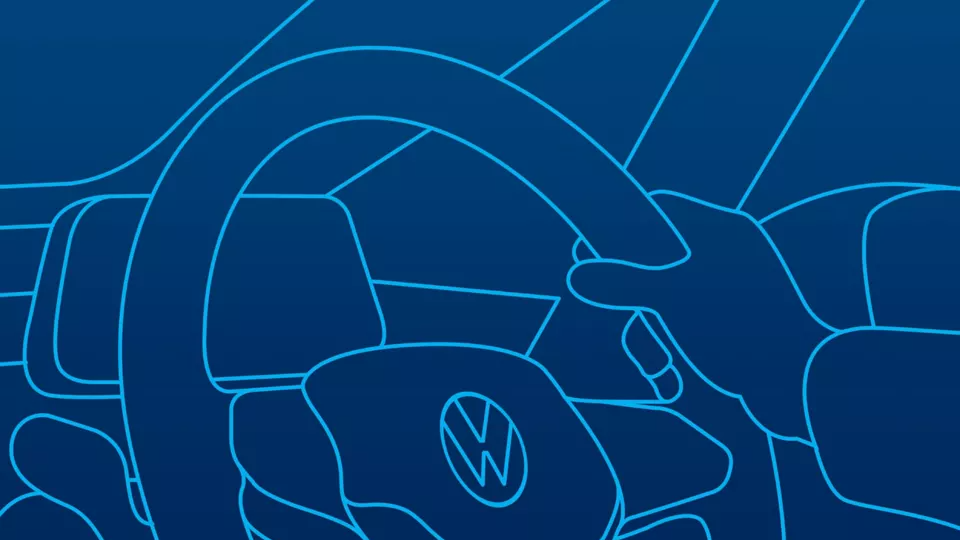
Try it yourself
We can tell you every detail of our vehicles, but we can’t tell you how it feels to drive one
